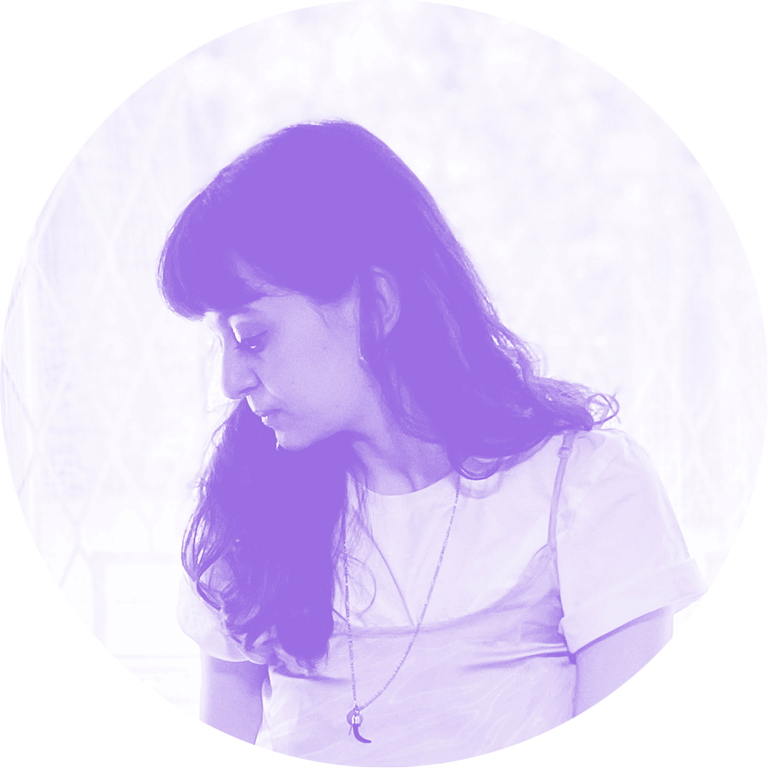Explaining 1960’s Fashion
In today’s blog, I’ll be explaining 1960’s fashion so you can identify it when you’re out in the wild and dress in that style if you like!
This is the second blog in the era explaining series so stay tuned for more! If you’d like to find out about what they wore in the 1950’s, head on over to this blog.
These blogs are also available as Youtube videos over on my channel which you can go and check out here.
Disclaimer! I’m not a historian, just a Personal Stylist with an interest in fashion history.
Shapes and styles
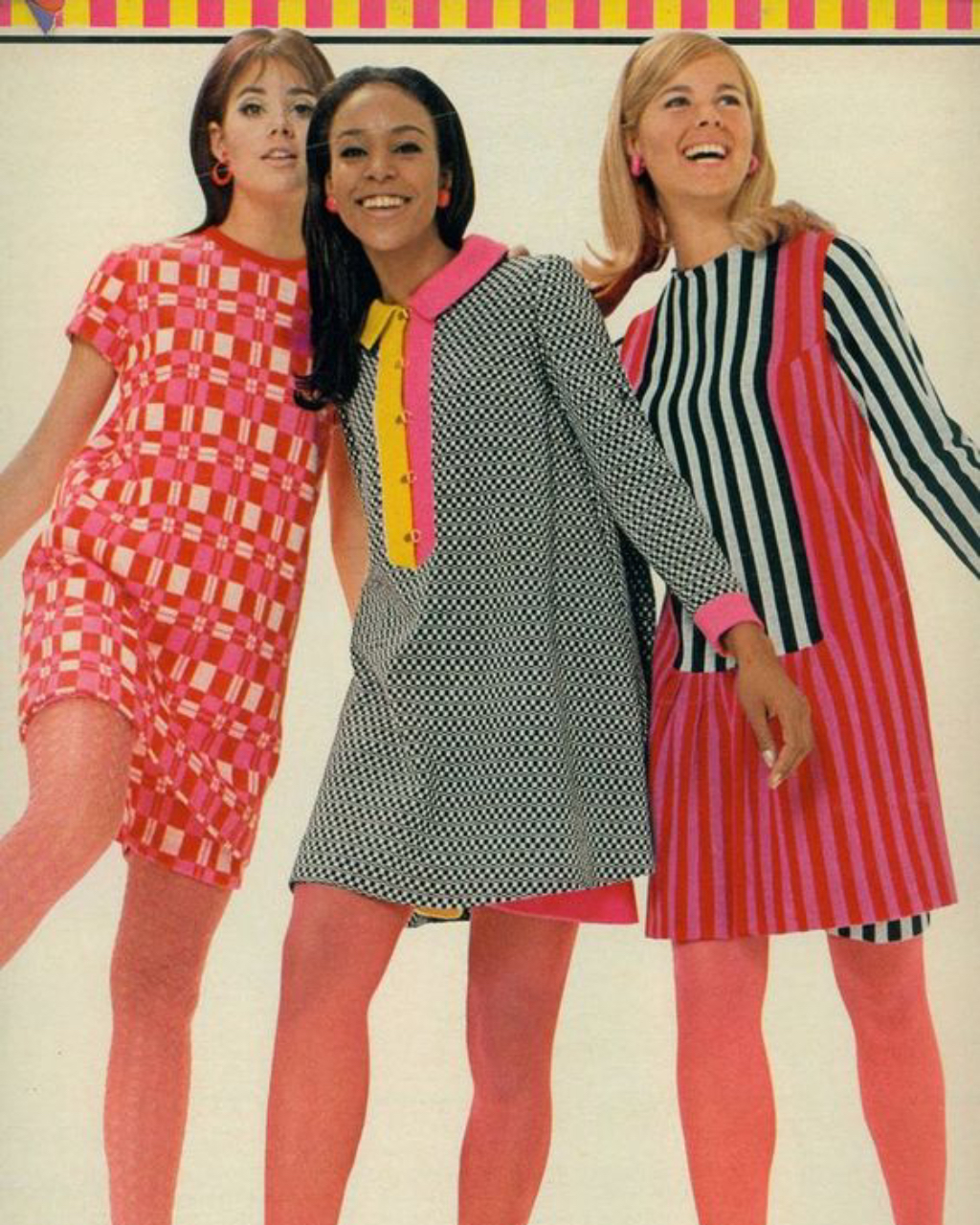
Fashion is a reaction to what came before and what’s happening now. In the early 60’s the style was quite similar to the 50’s but we started to suddenly get shorter hems and less structure to clothing.
Like in the 50’s, the 60’s really saw youth gaining even more dominance and its own income to spend. Breaking free from any lingering impact a parent may have had on their style.
Previously, you wanted to have French style and fashion was catered to wealthy shoppers looking for this extravagance. Now the hit place to be was London. Carnaby Street, Saville Row and Kings Road in particular were the cool spots and Swinging London became very influential for fashion.
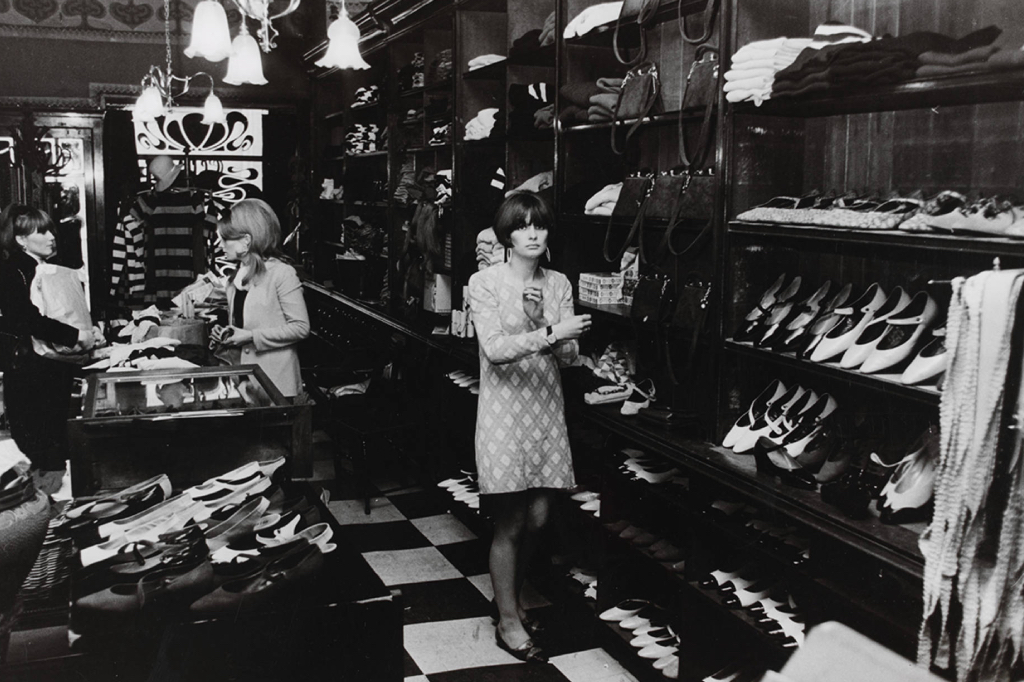
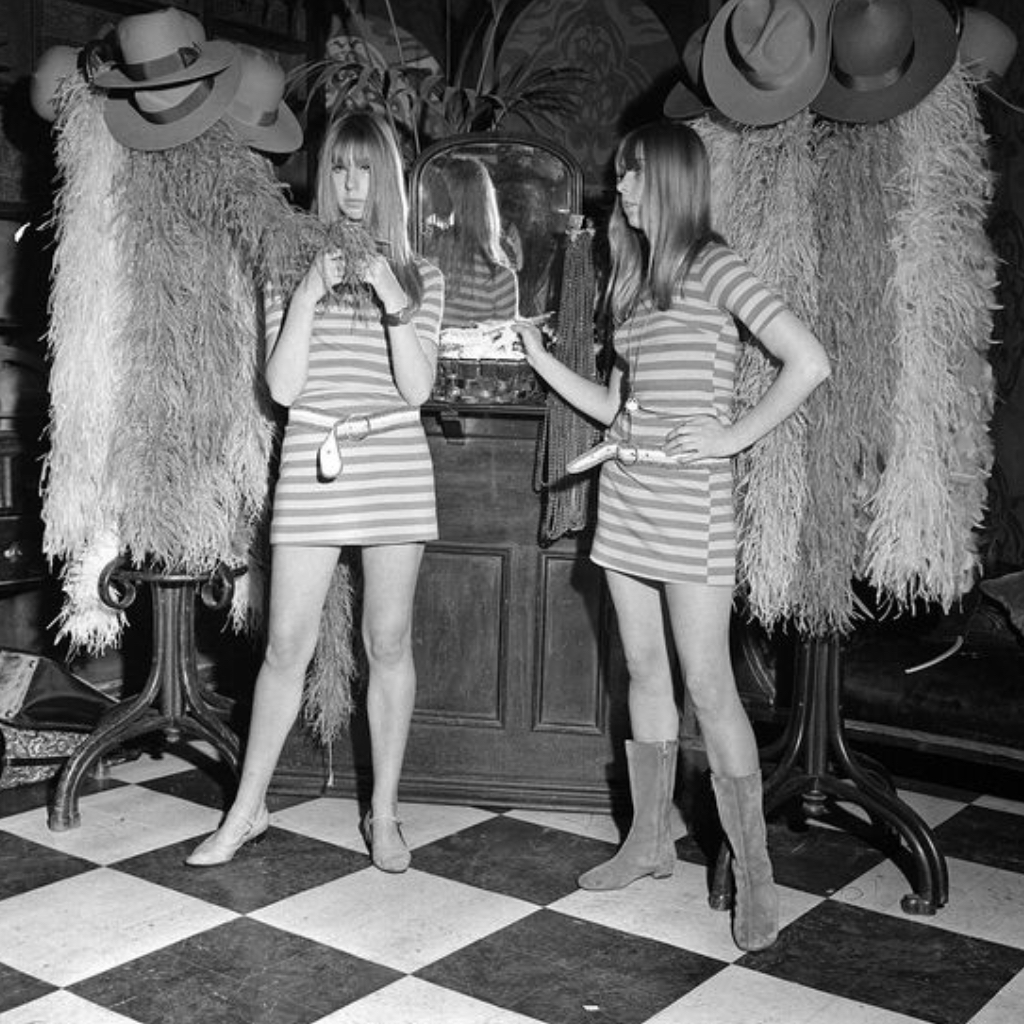
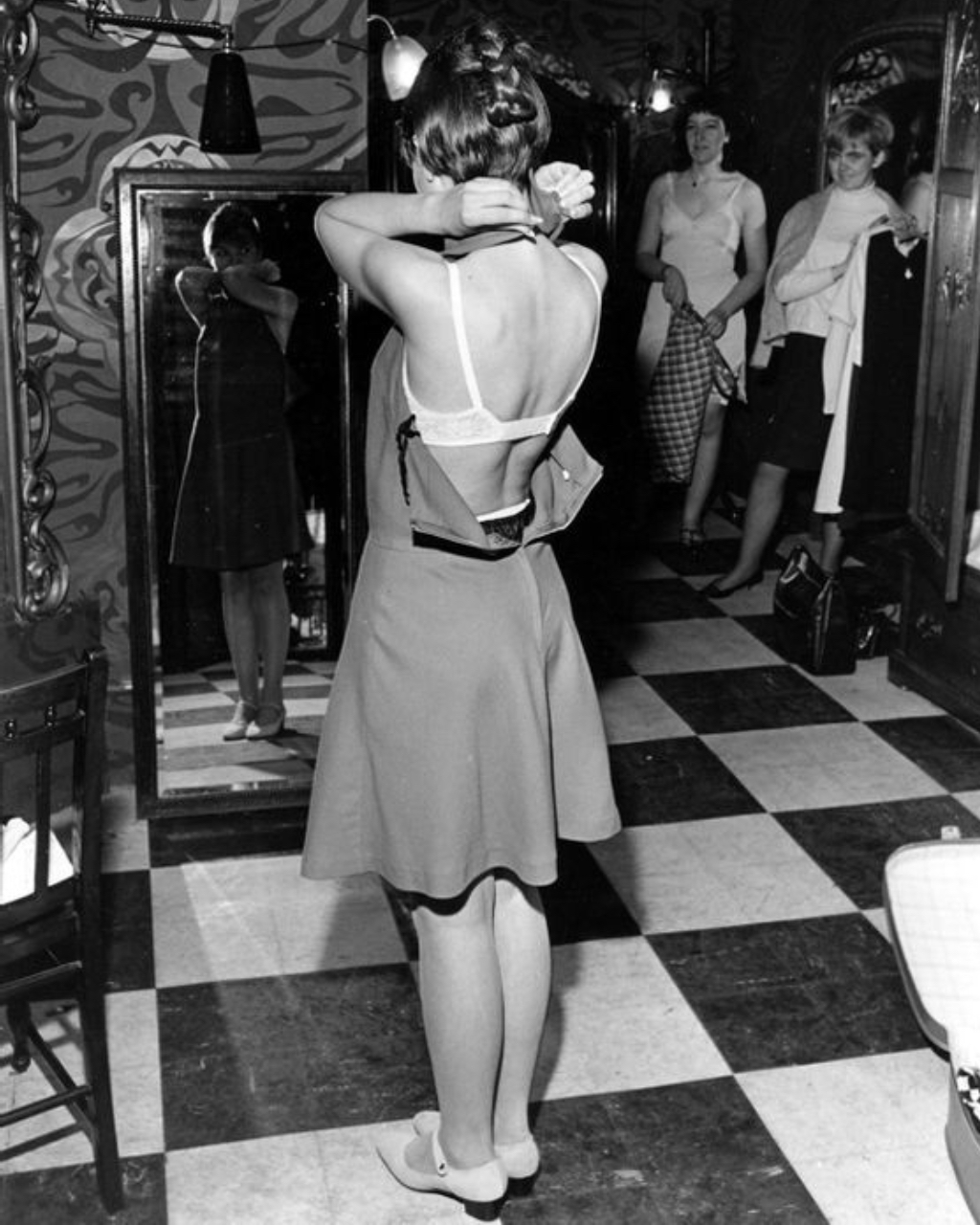
New shops started to cater to a different kind of shopper and we were seeing boutiques, a small self service shop, offering affordable fashions. Giving a less formal experience than a department store. Shopping was now a more social activity.
Biba in particular was a very popular shop run by a Polish couple in the 60’s – 70’s. Many women under the age of 25 flocked there for fashions aimed at them. Biba profited from piling it high and selling it cheap (a bit like shops of today). The aesthetic was influenced by decadent styles like art nouveau, featured in the many swirls and art deco which you can see in the logo font.
The store had a unique atmosphere with ornate victorian furniture and antiques. It was dimly lit with loud music you could hear on the street and a large communal changing room. Many people look back fondly on this experience! The staff were young and approachable, wearing the clothes of the brand. In the end Biba was sold to Dorothy Perkins in 1976.
The mini skirt
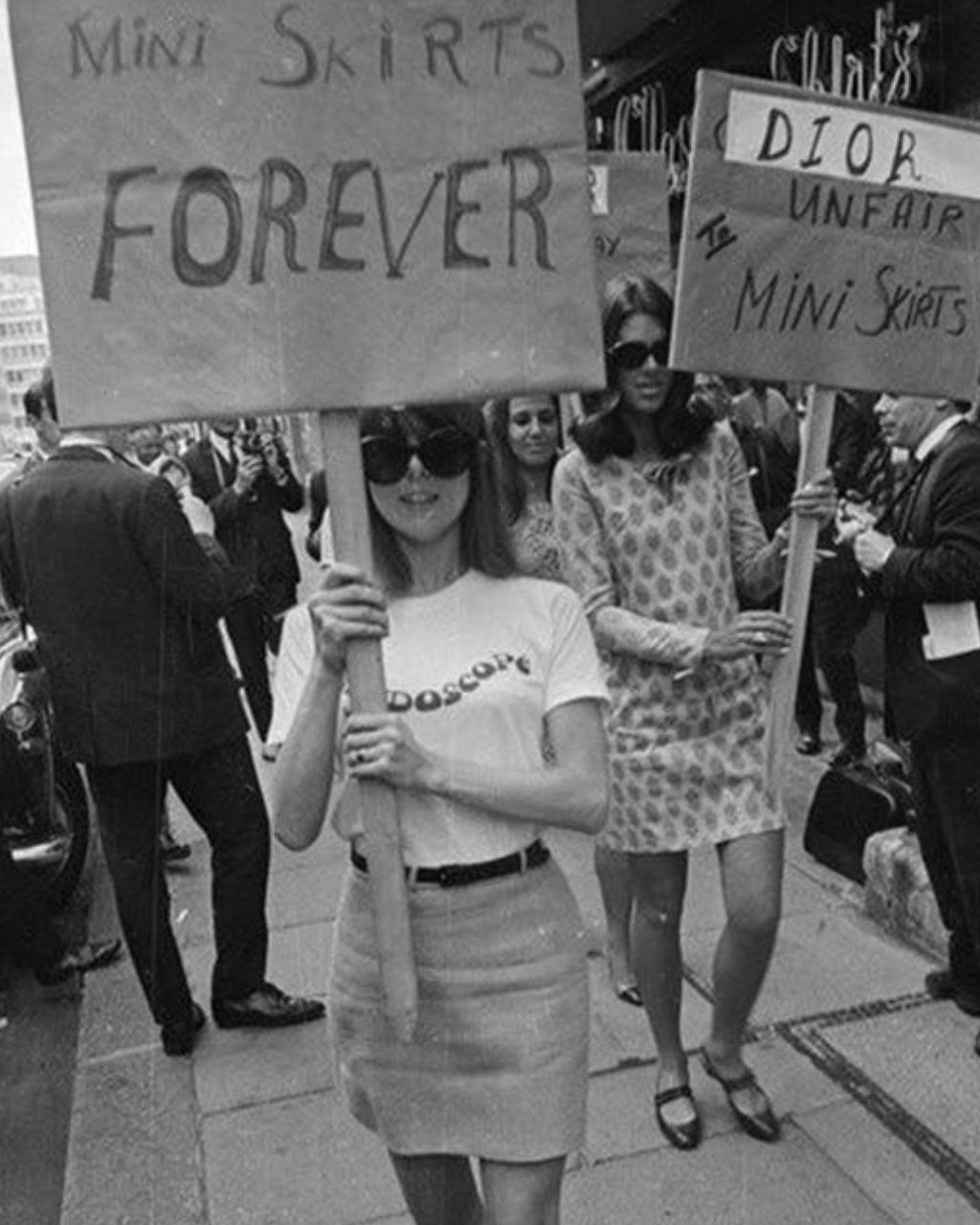
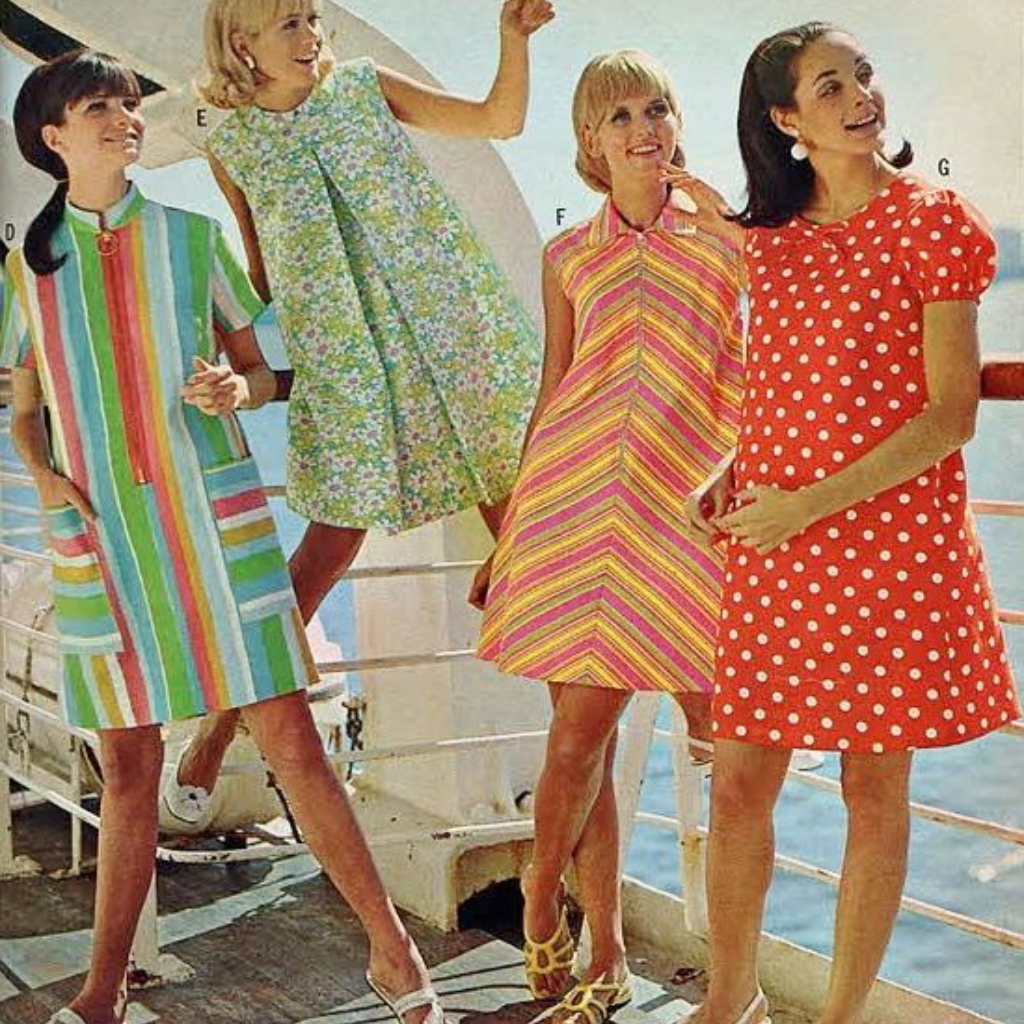
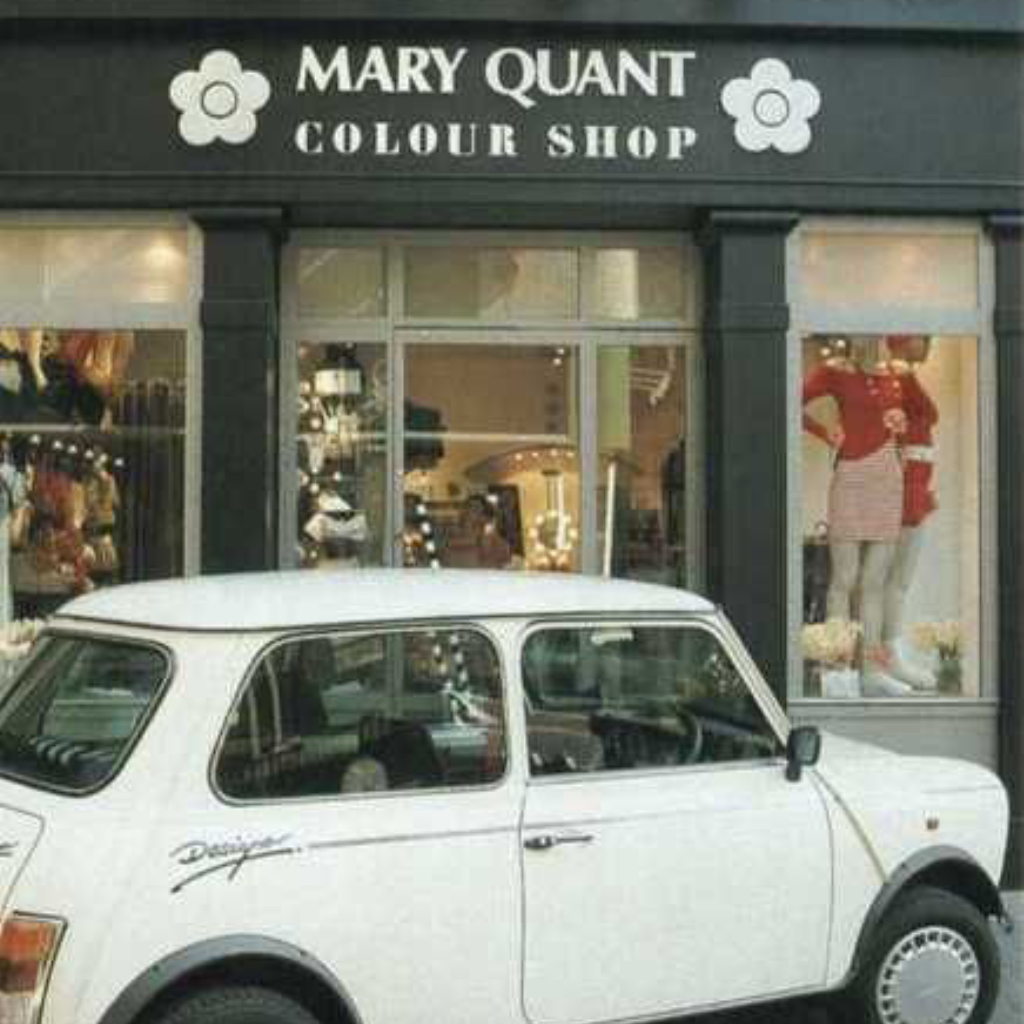
Speaking of the 20’s, in this era hemlines had risen to knee length which was the highest it had ever been. But it was the 1960’s where the mini skirt was born. Above the knee, the shortest and most daring hemline we’d seen! The earliest sighting was 1962 reported in the Mexican gazette but 1964 is when Mary Quant really pioneered it into fame. It could be mini as in miniature but it’s also said to be named after her Mini Cooper.
Mary wasn’t the only one though! French designer Andres Courreges also experimented with hemlines in the early 60’s and began to show space age dresses in 1964 also above the knee.
To go with the hem lines, we were starting to get knee high boots to fill in that skin gap. These boots tended to be white or a bright colour to match the whole look. Heels were small or flat. In general heels had lowered a lot since the 50’s and were either kitten, a little chunky lift or completely flat.
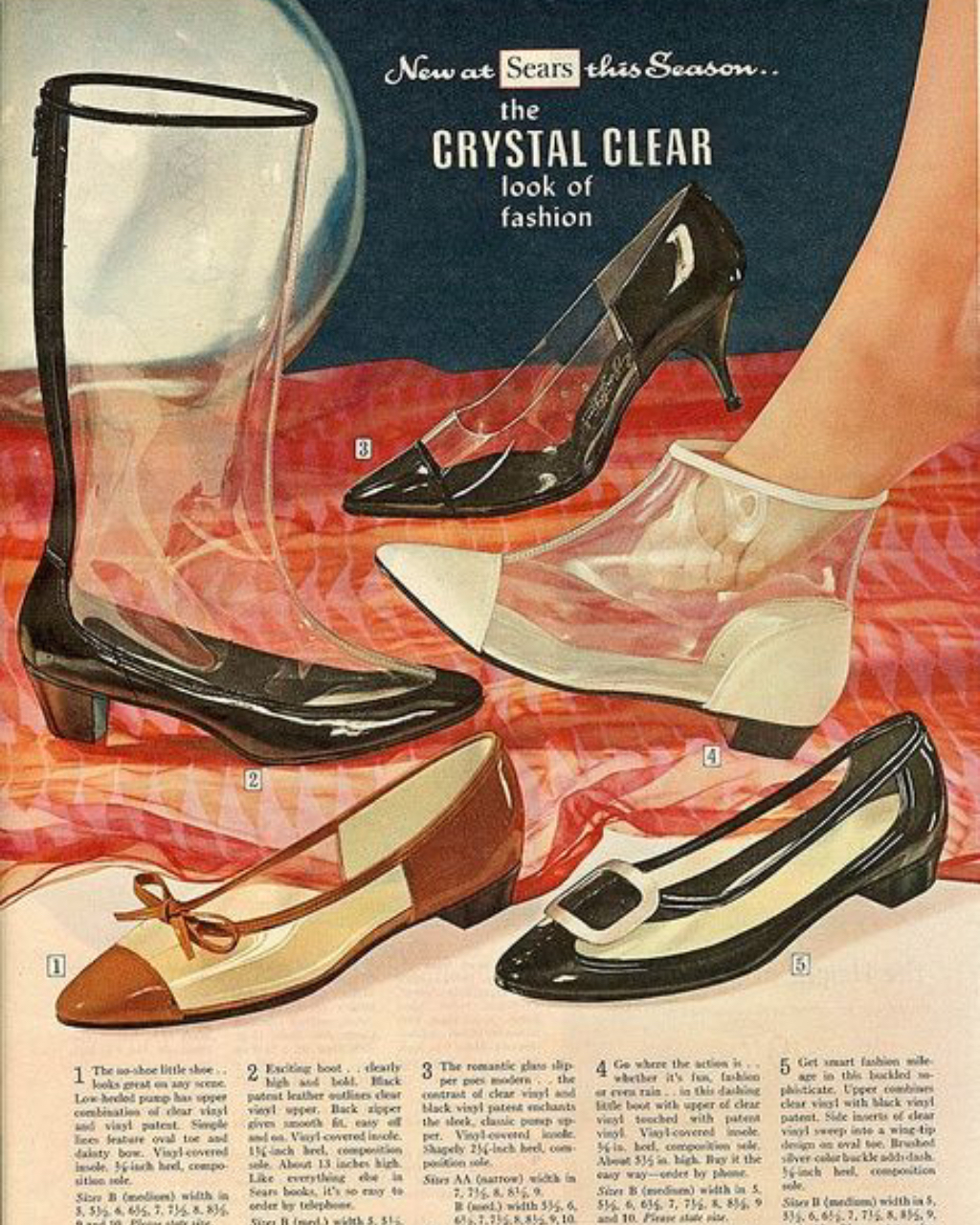

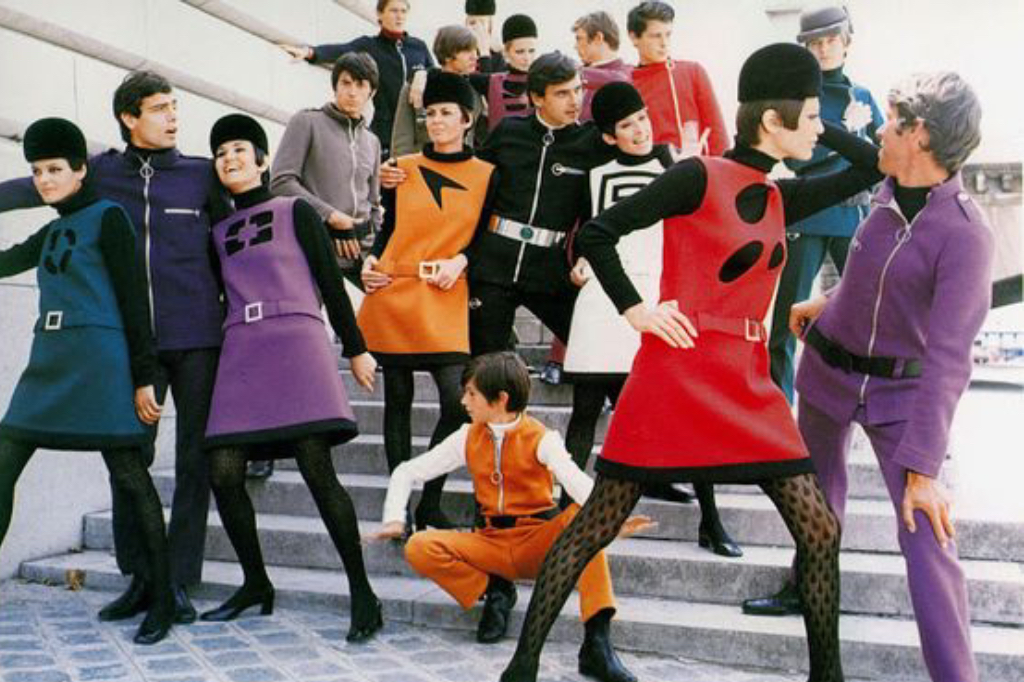
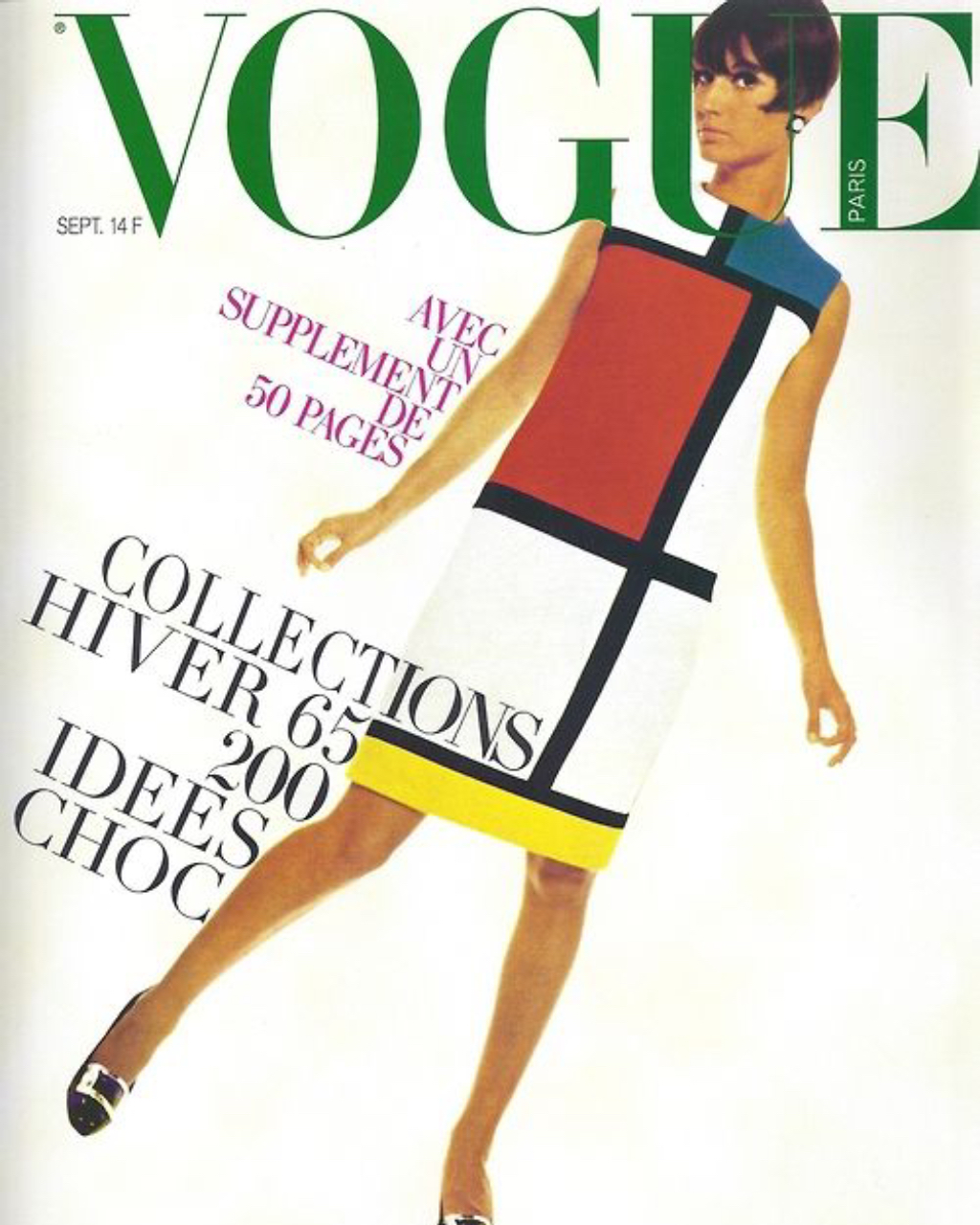
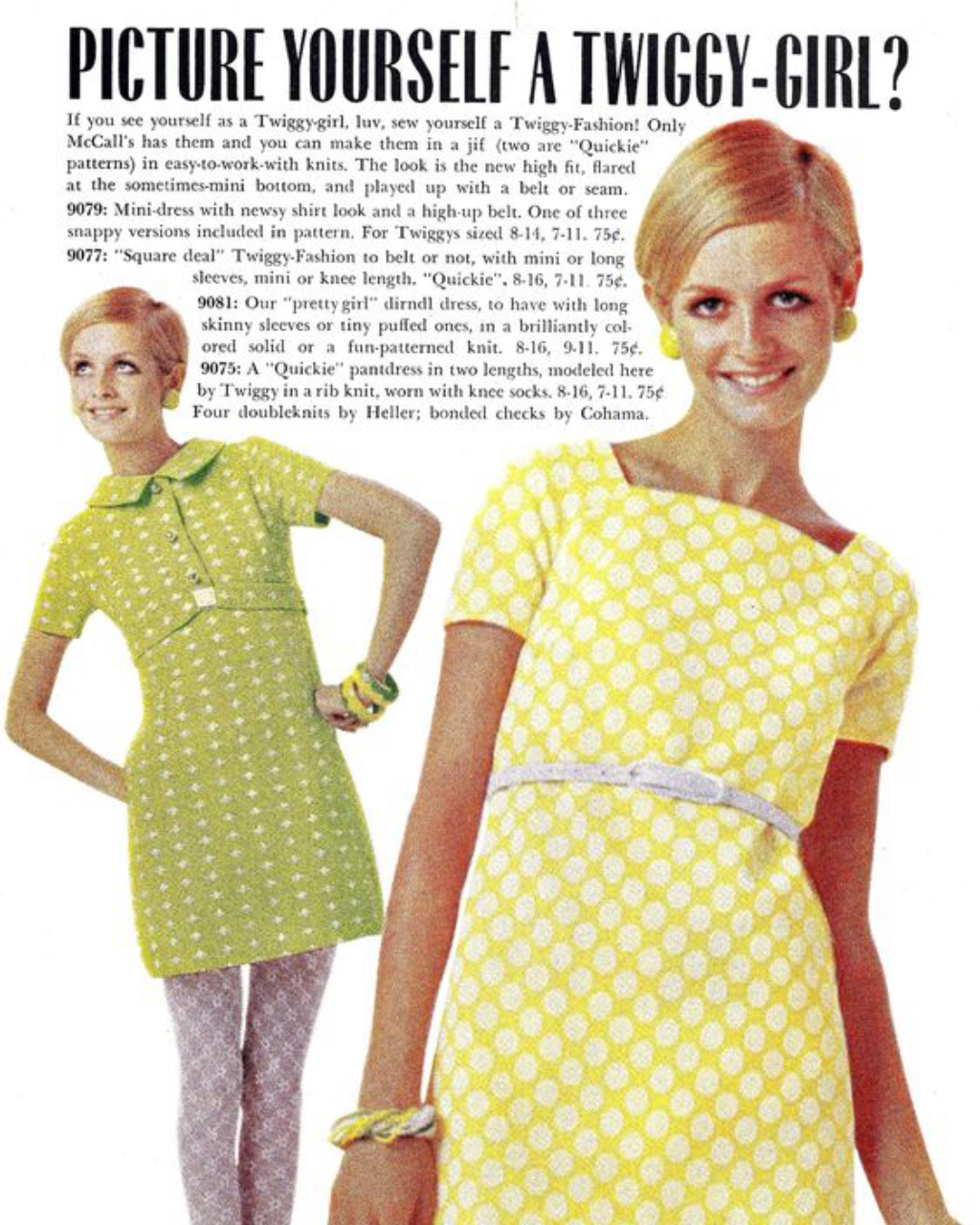
Twiggy (real name Lesley Lawson) was the biggest style icon of the 1960’s some would say. Her boyish and childlike frame was very different to the curvy silhouette popular before. Remember Marilyn’s curvy hourglass figure? This is the opposite. She was nicknamed after a twig! Now people wanted to gloss over those curves and appear flatter and look like her – a worldwide fashion icon.
The shapeless dresses which were favoured are called shift dresses and you can still get them today. It was very popular to have a artsy style in bright colours and prints. Fashion was loud and fun and experimental with plenty of novelty and quirks. A reaction to the more neat and buttoned up style of the era before perhaps.
The Mondrian dress by Yves Saint Laurent in 1965 was very famous for its pop art funky style. We also had the Heinz soup can as a print inspired by Andy Warhol who was a big icon. There were even dresses made of paper in some of these whacky prints. Fashion and art are always close friends and there was a lot of this mix in the 1960’s.
The Space race was a huge influence on fashion too. This resulted in lots of future inspired styles in pop culture such as Space Odessy and characters like Barbarella. Paco Rabanne, Pierre Cardin and Andre Courreges championed these styles. We were also getting new fabrics like perspex, vinyl and Goretex which we still use today.
Mod came from the term modern as this movement felt like something entirely different from what fashion was like before. Young people took to this mod style and the calling cards were those bright pop colours, shift dresses and short sharp haircuts.
Hair and makeup
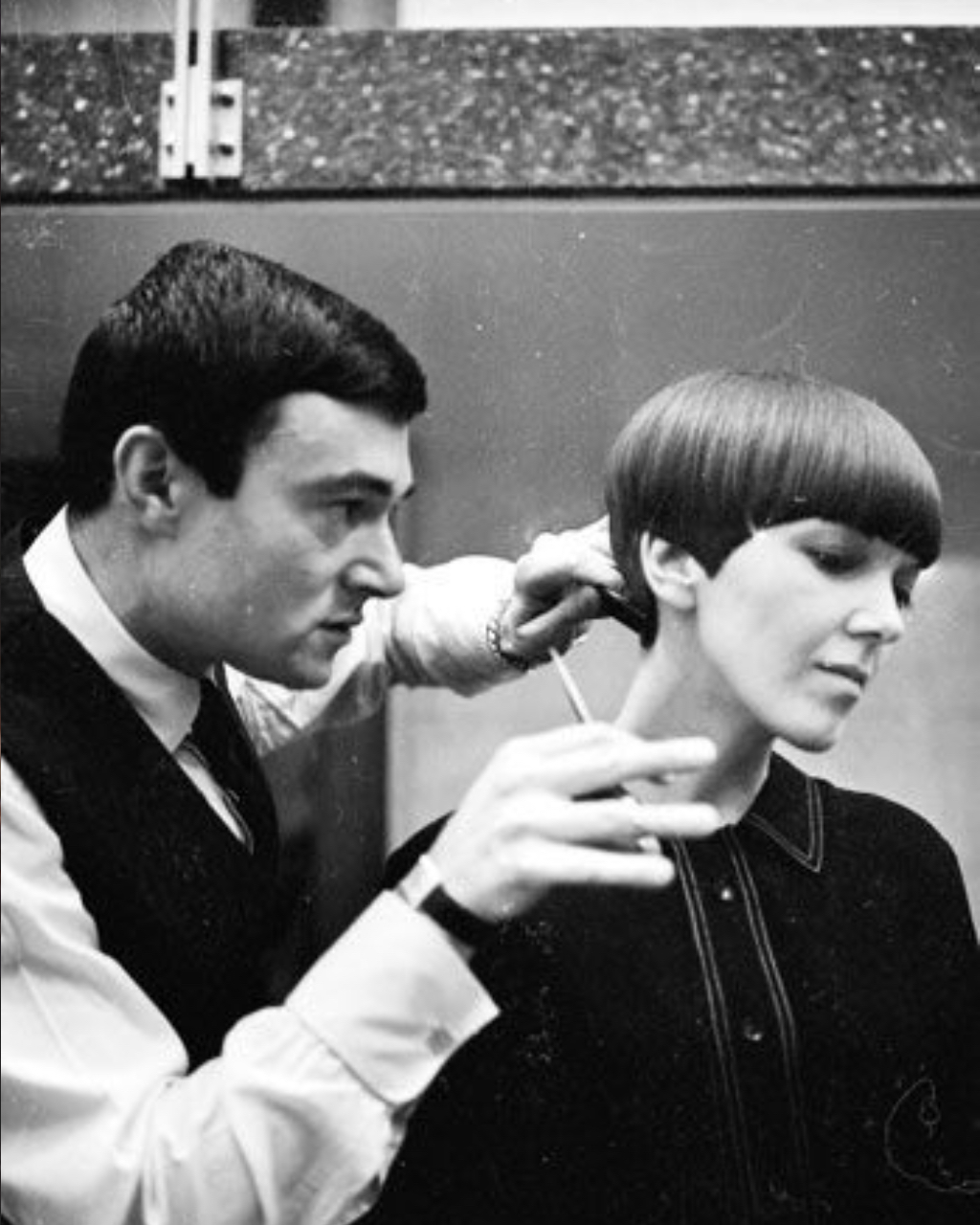
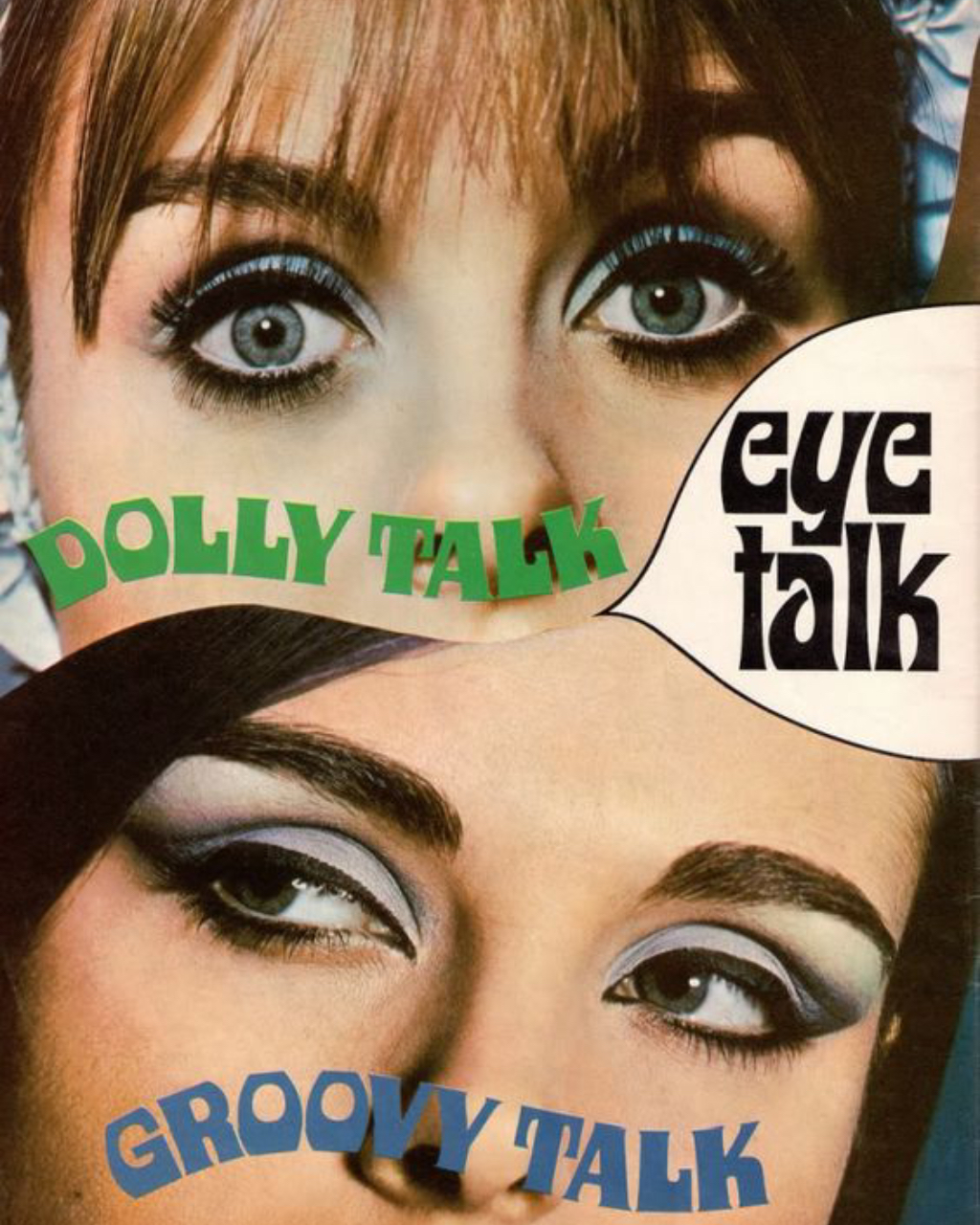
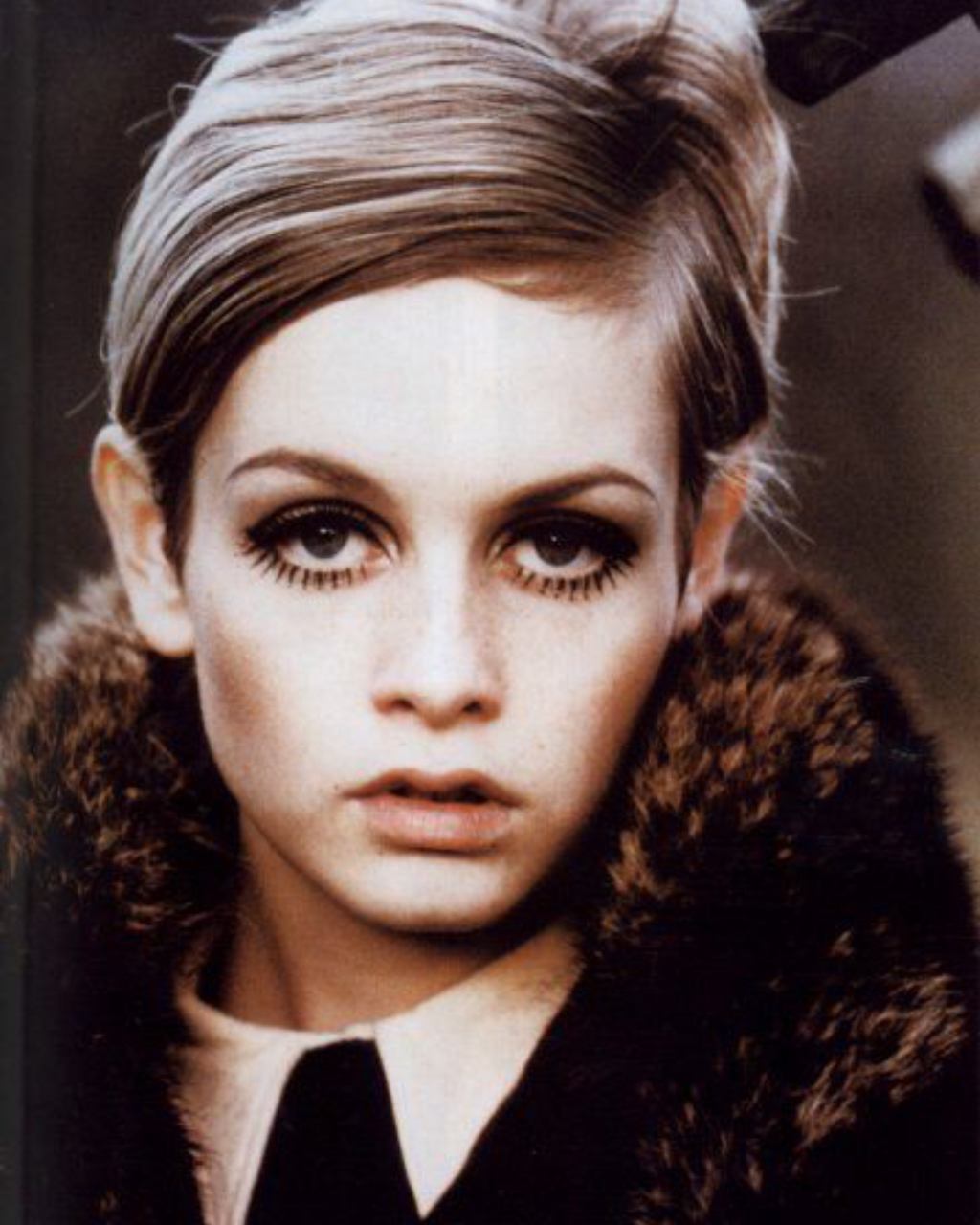
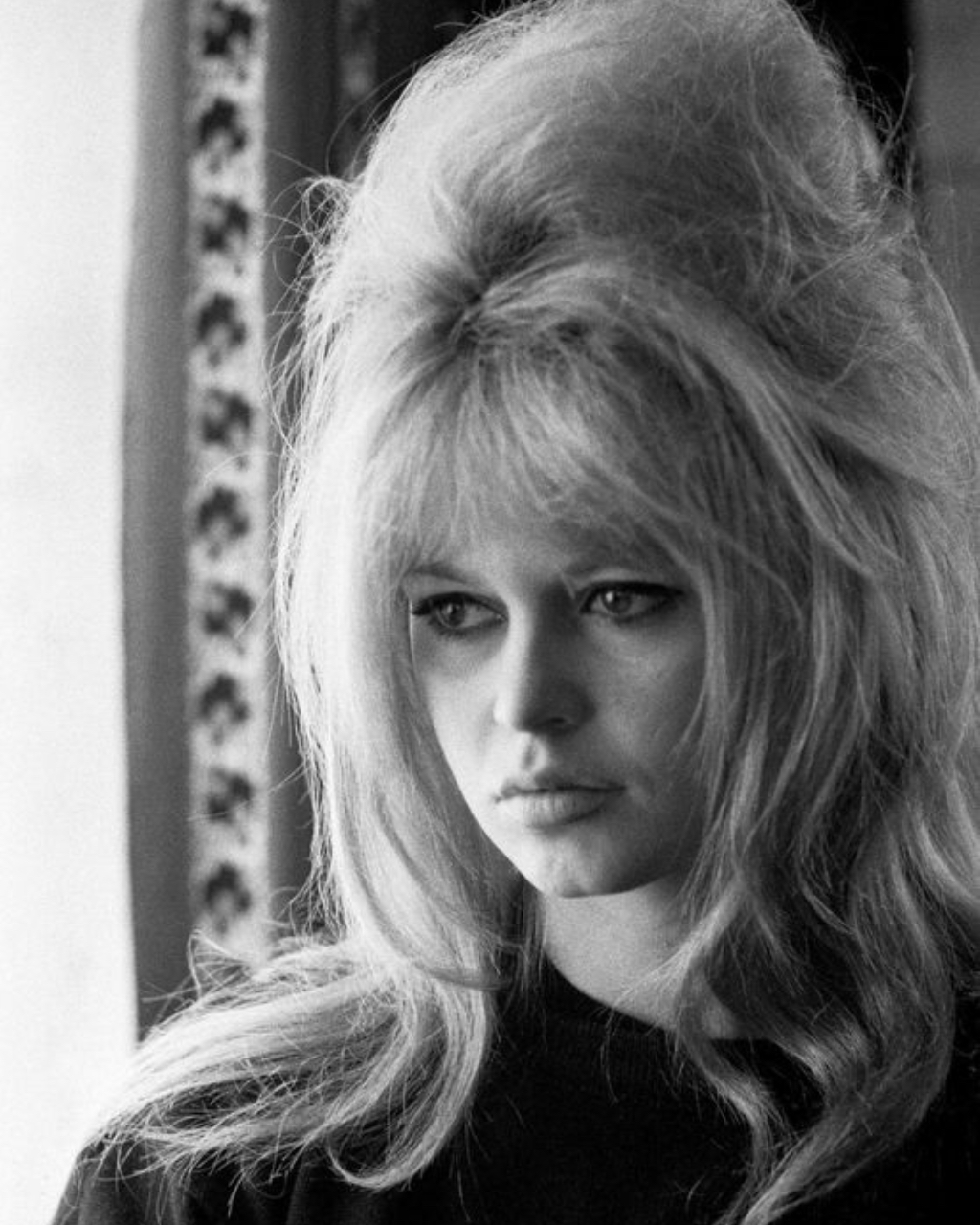
Vidal Sasson made the straight blunt bobs popular. Fringes were also blunt and hair became as fun and artsy as the clothing and accessories.
Makeup also became more prominent and daring than before. Bright colourful eyeshadows with strong eyeliner lines added to the loud outfits. People were also painting on fake eyelashes to appear more doll-like
There was a dolly girl kind of vibe with lot of sweet childlike details in clothing like bows and lace, cute collars, frilly socks and tights as well as Mary Jane shoes. The shapelessness of the dresses also added to this. In a era with more money and less responsibility people must have felt a childlike sense of fun. As well as all the excitement of new discoveries and breakthroughs.
To go with the more girly style, long hairstyles tended to have lots of curls, perhaps a half updo with a big beehive, flowers and bows in the hair and child-like hairstyles like pig tails and hairbands were popular.
Hippies
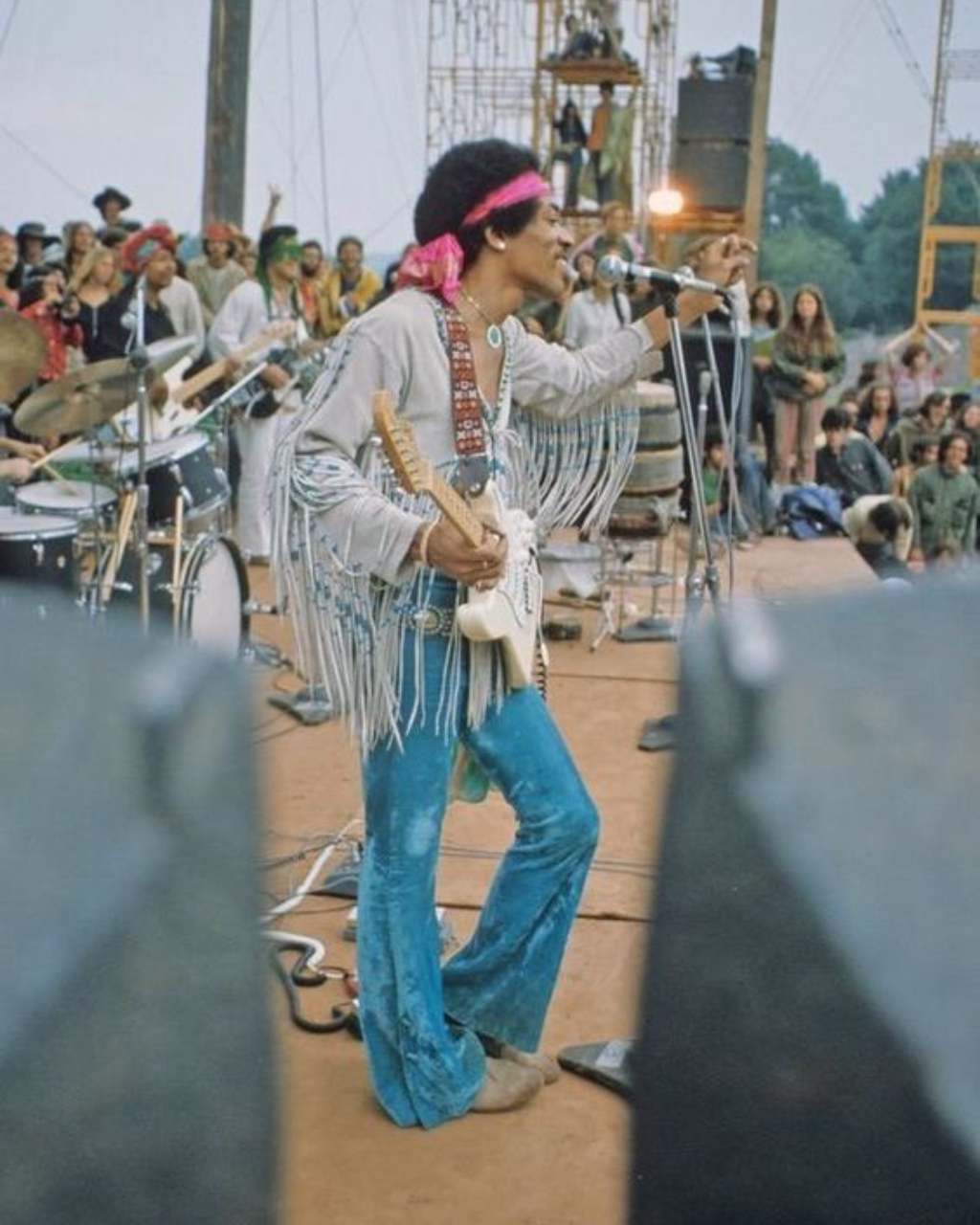
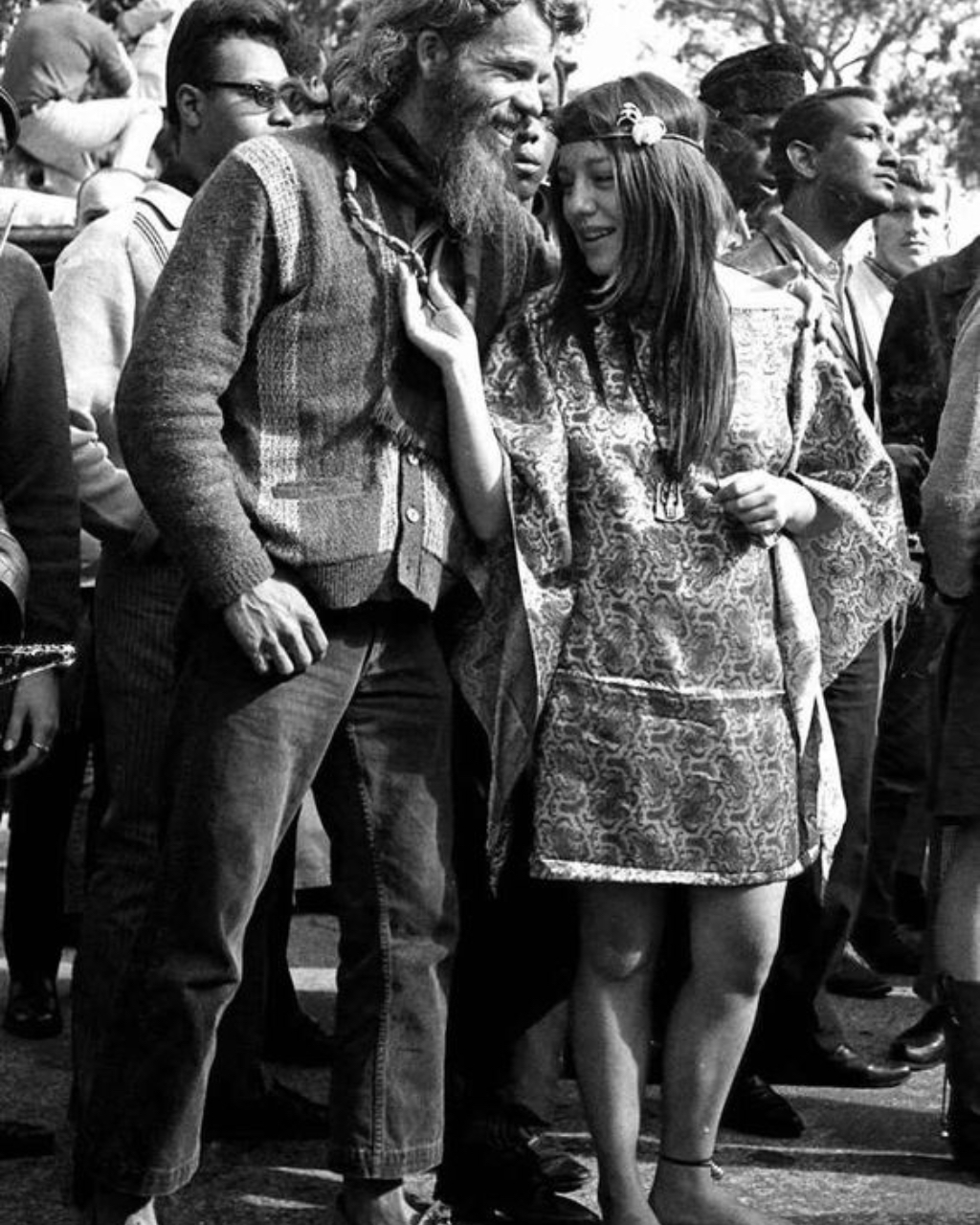
Having more money lead even more travelling and holidays. This leads on to the hippie movement as much of the style was inspired by fashions from abroad. The Isle of Weight festival 68-70 and Woodstock 1969 were place this trend thrived as well. The movement behind these fashions were about peace, love and freedom which of course is a reaction to wars going on. Bare foot and floaty clothes were big as comfort started to become key.
Hair was grown out long and unlike the mods, wild and untamed. Both men and women started to grow out the long hair that became more mainstream in the 70’s as did the hippie movement. This style became more mainstream in the 1970’s and we saw it take to the high street.
Native American style and fringing as well as psychedelic prints inspired by India. Hippies took on styles from many other cultures and incorporated flowers and other prints in natural colours and fabrics which of course we see more of in the 70’s too. Emilio Pucci made silk swirly patterns for the rich which is like how today we have designers making a high end version of a street trend.
Fashion icons
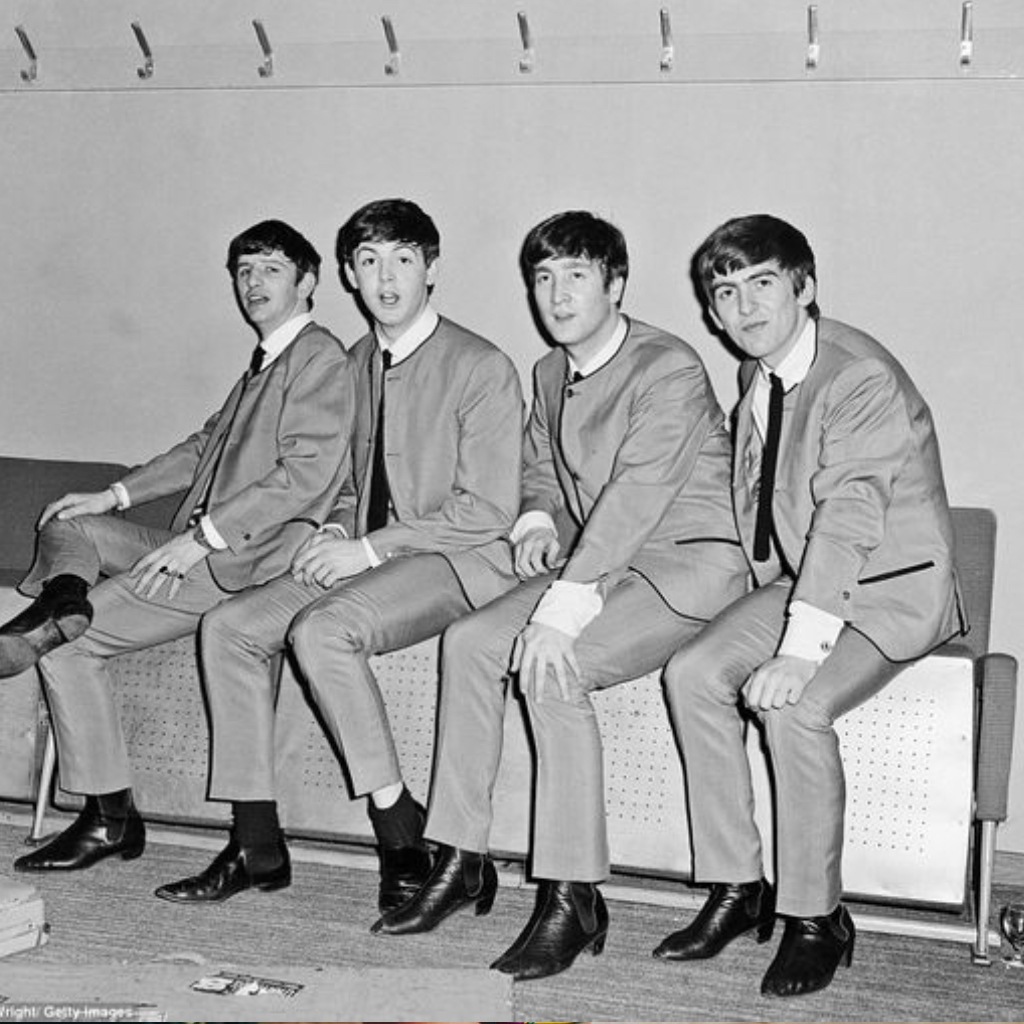
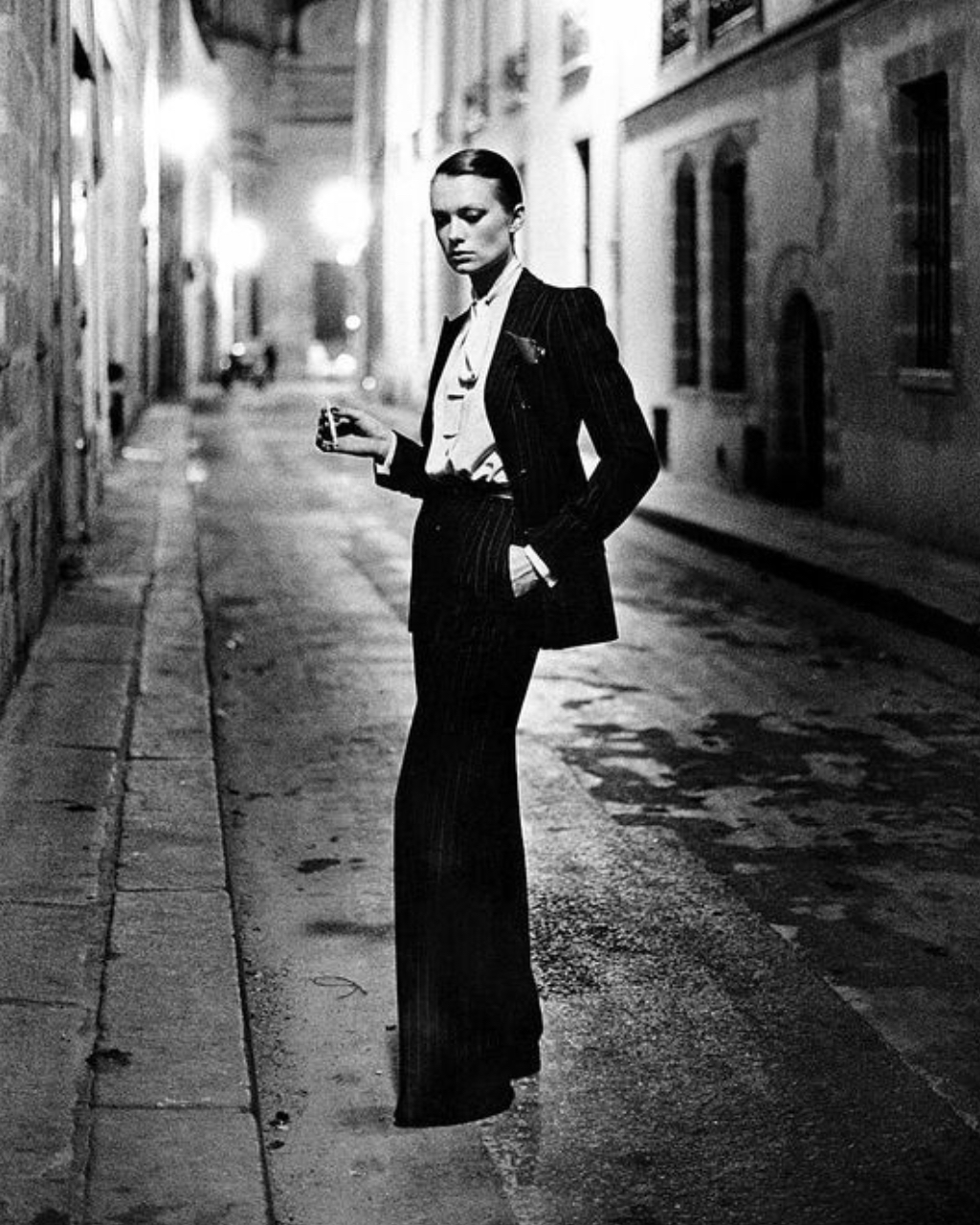
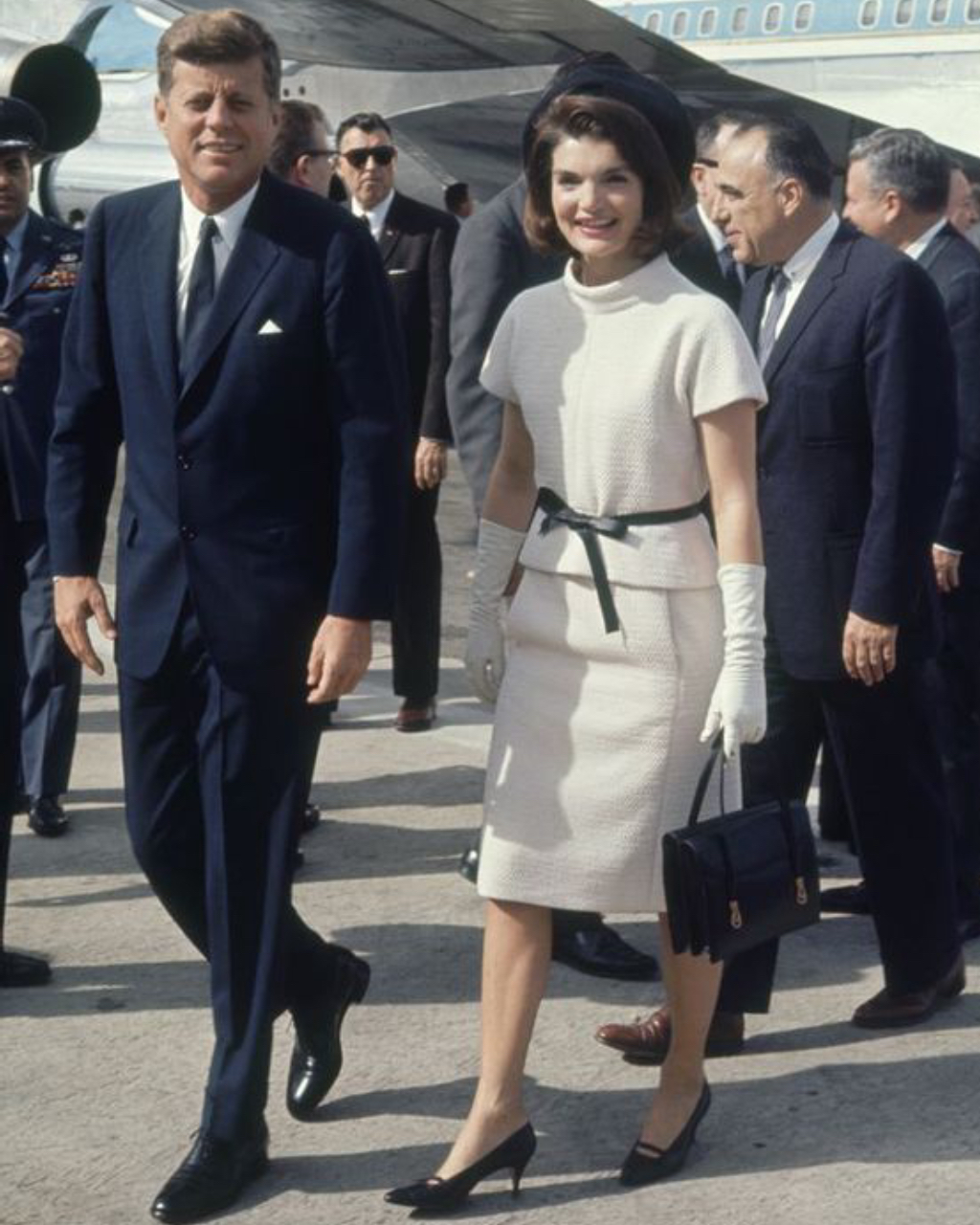

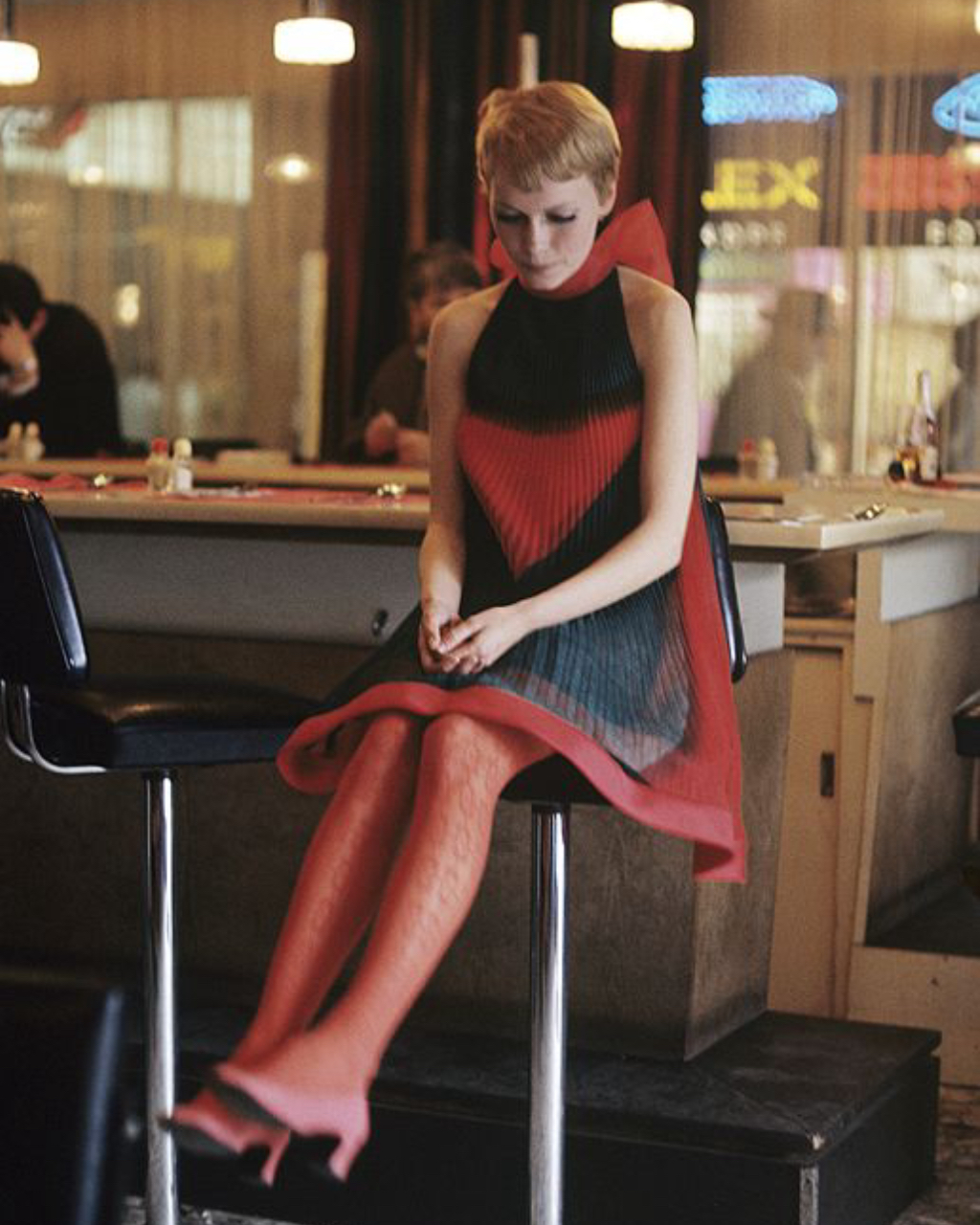
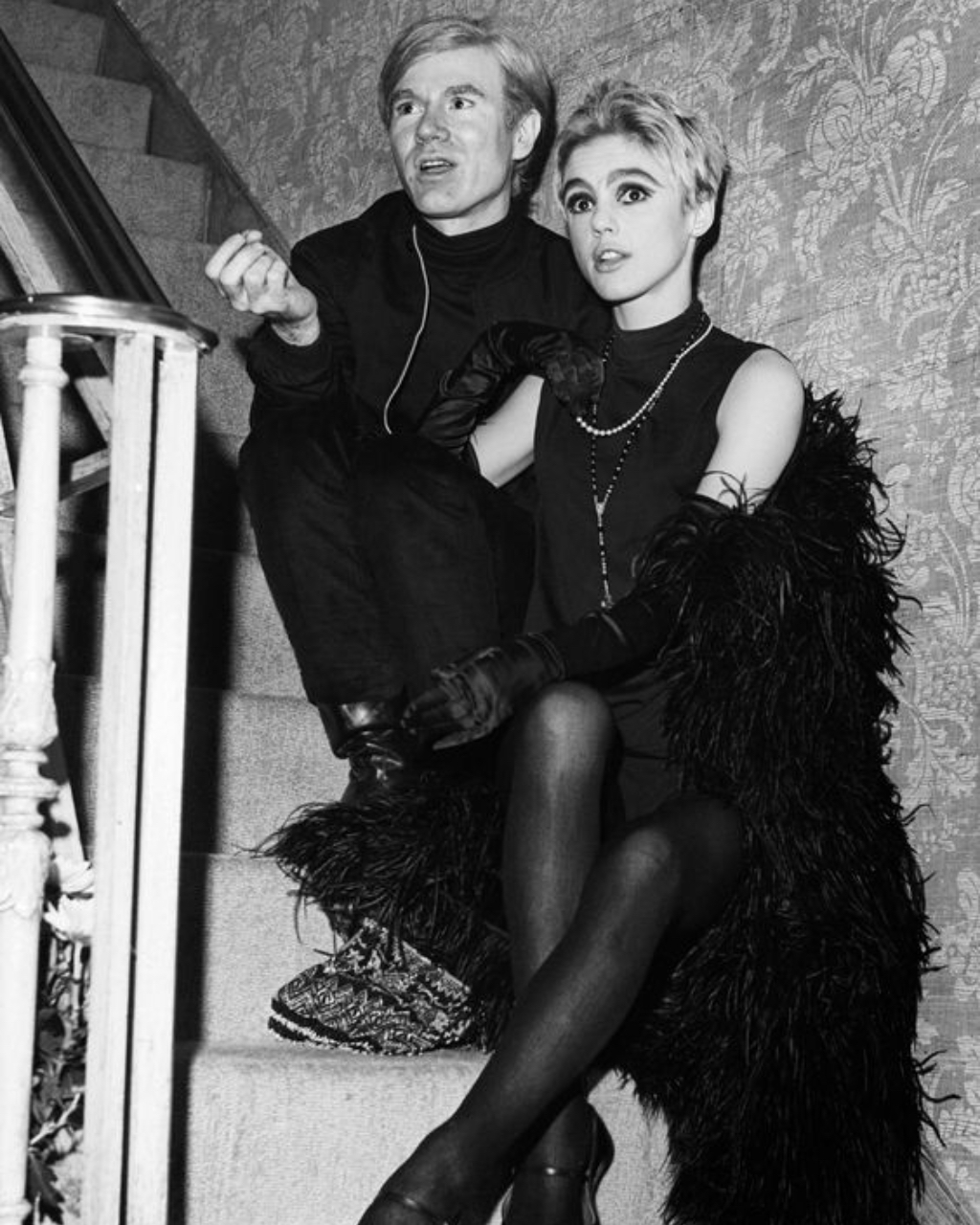
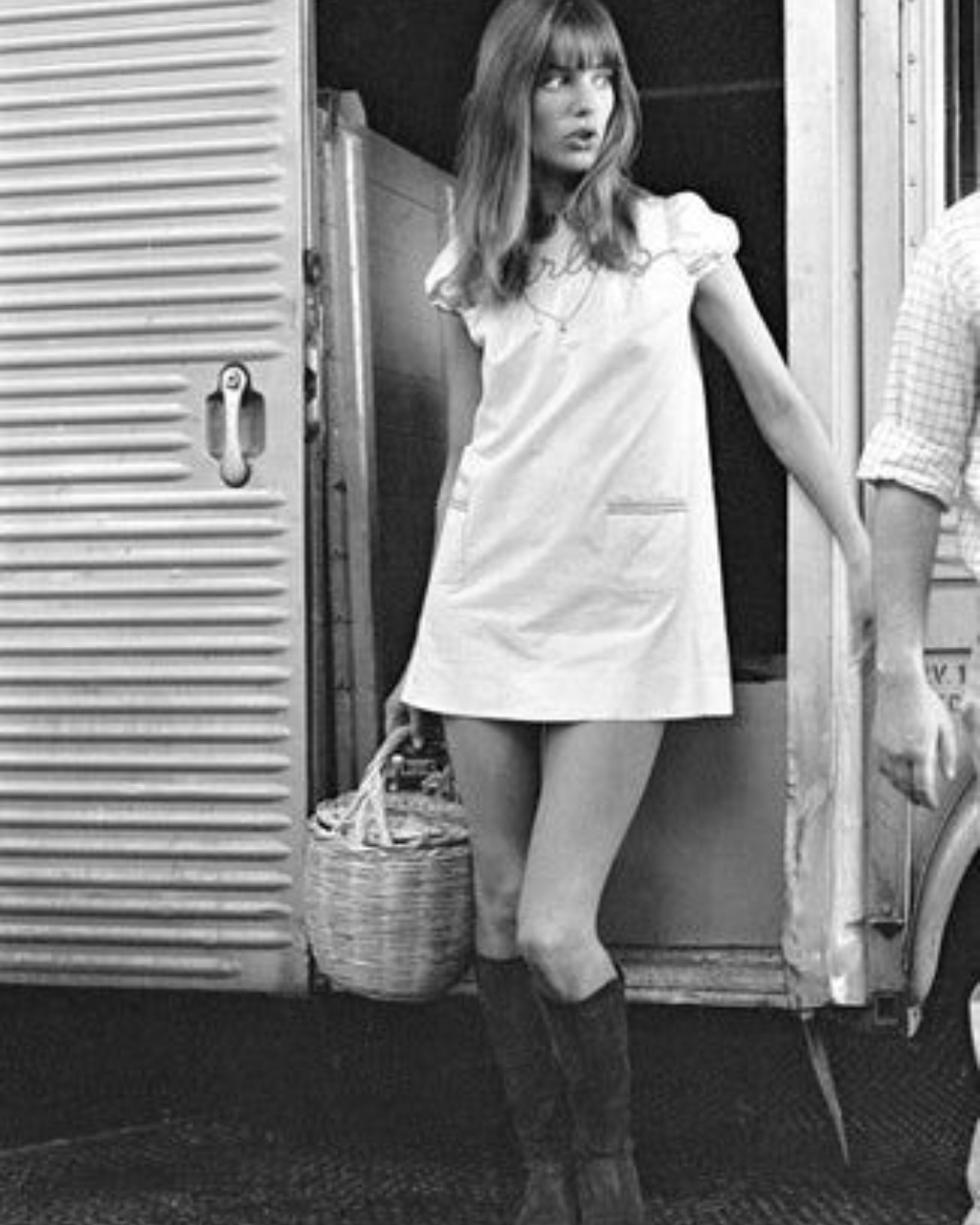
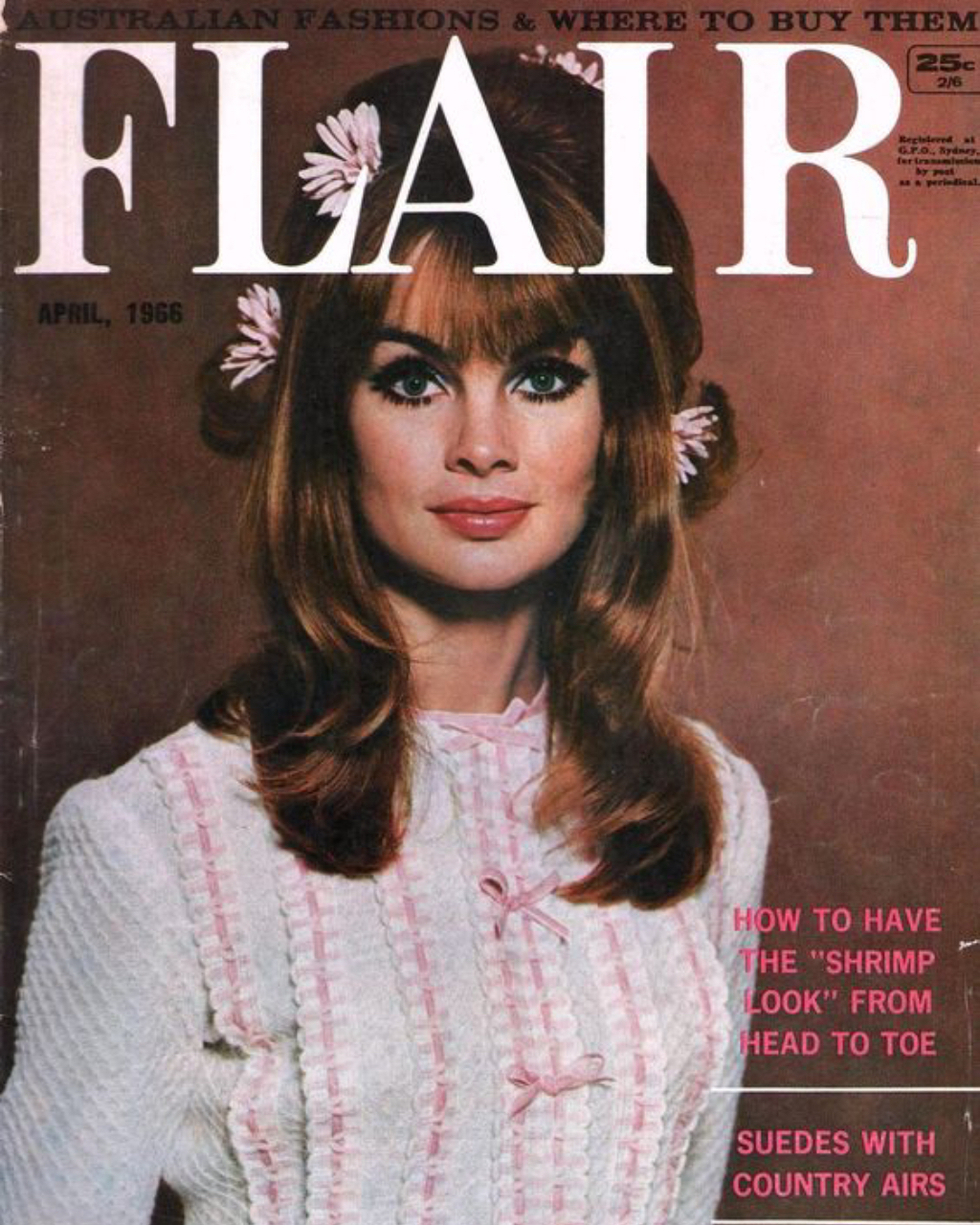
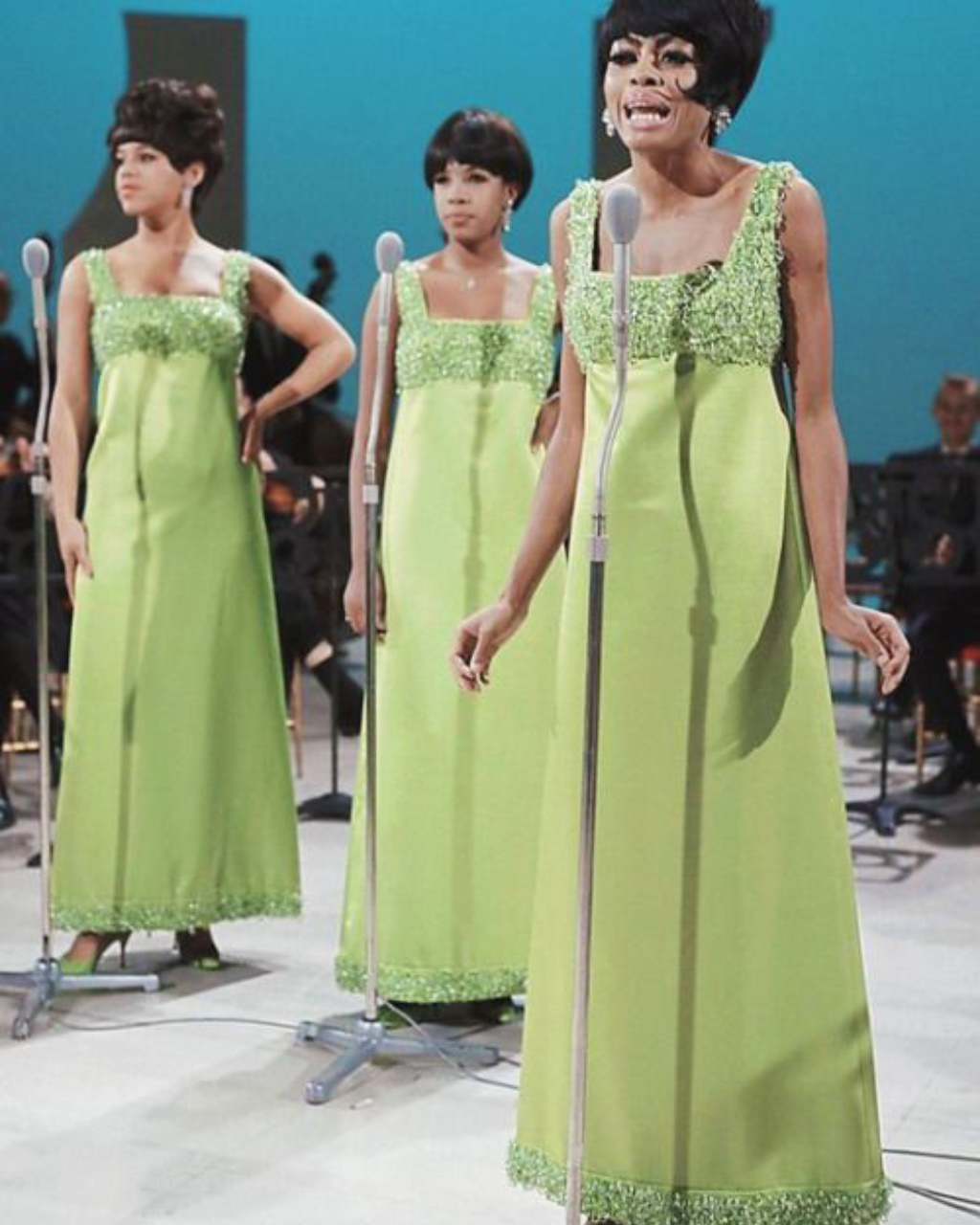
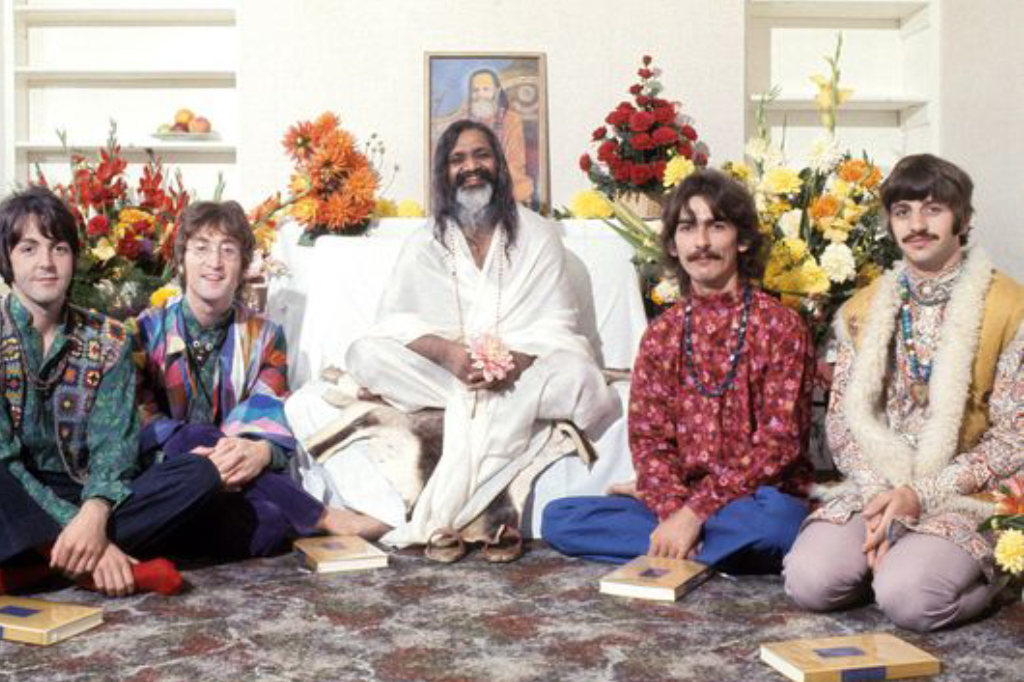
Musicians such as The Beatles ruled the 60’s. They were style icons of every trend and dictated a lot of mens fashion in this era.
The Beatles popularised the fringe for both men and women. Before the 60’s, they had quiffs like teddy boys or Elvis Presley. This was until they played in Germany and met Astrid Kircherr, a young photographer who combed their hair forward German style. It was when they were starting out playing small clubs with a different drummer, Stuart Sutcliff, who Astrid dated and started to influence the band’s style.
When the Beatles came back to the UK and got a manager, Brian Epstein, he had them smarten up from their rocker look. This is where the matching suits came from as he was a big Saville Row fan. He also had them wear Cuban heeled boots which many men started to try. Even a small heel for a man new thing that fashion hadn’t seen since Georgian times maybe. We were in an era where people could afford to have fun with fashion and that included men.
This uniformity helped give The Beatles a clear image. The drainpipe trouser and clean collarless matching suits are probably what comes to mind first when you think of the band. Many men started to wear more close fitting tailored suits and musicians chose matching outfits to give themselves a clear identity.
When The Beatles went to India they became very into the style and took a lot of that home. They grew their hair and facial hair and were very into the hippie look. Being the icons they were, they definitely added to the late 60’s hippie popularity.
Jackie Kennedy or Jackie O as she affectionately called, was influential for older women wearing simple matching suits. Jackie took more risks than the typical First Lady and chose brighter colours and shorter hemlines. Almost like the Beatles, many women wore matching collarless suits too. YSL Le Smoking mens suit for woman had women play with masculine tailoring and shapes too.
Like I mentioned in the 50’s blog, Audrey Hepburn wore a lot of Givenchy and her film Breakfast at Tiffany’s in 1961 helped popularise the little black dress. Black was still a colour associated with funerals and Audrey helped make it appear more chic.
Edie Sedgwick was Andy Warhol’s muse – like America’s answer to Twiggy. The original IT girl some people would say. Mia farrow, a former wife of Frank Sinatra had a fun playful look and a very short pixie haircut.
Jean Shrimpton was a popular 60’s model who actually paved the way for Twiggy popularising a more leggy frame. Jane Birkin was so big she even had the Birken bag named after her in 1984 when the contents of the straw bag she always carried spilled out on a plan in front of the Hermes executive.
Another musical influence on fashion was The Supremes. Like the Beatles, they wore matching looks with plenty of fun and glamour. Diana Ross in particular became a major fashion icon and is still today. Many musician’s partner’s were style icons in their own right. Patti Boyd not only inspired many musical hits but also fashion.
How to do the 1960’s now
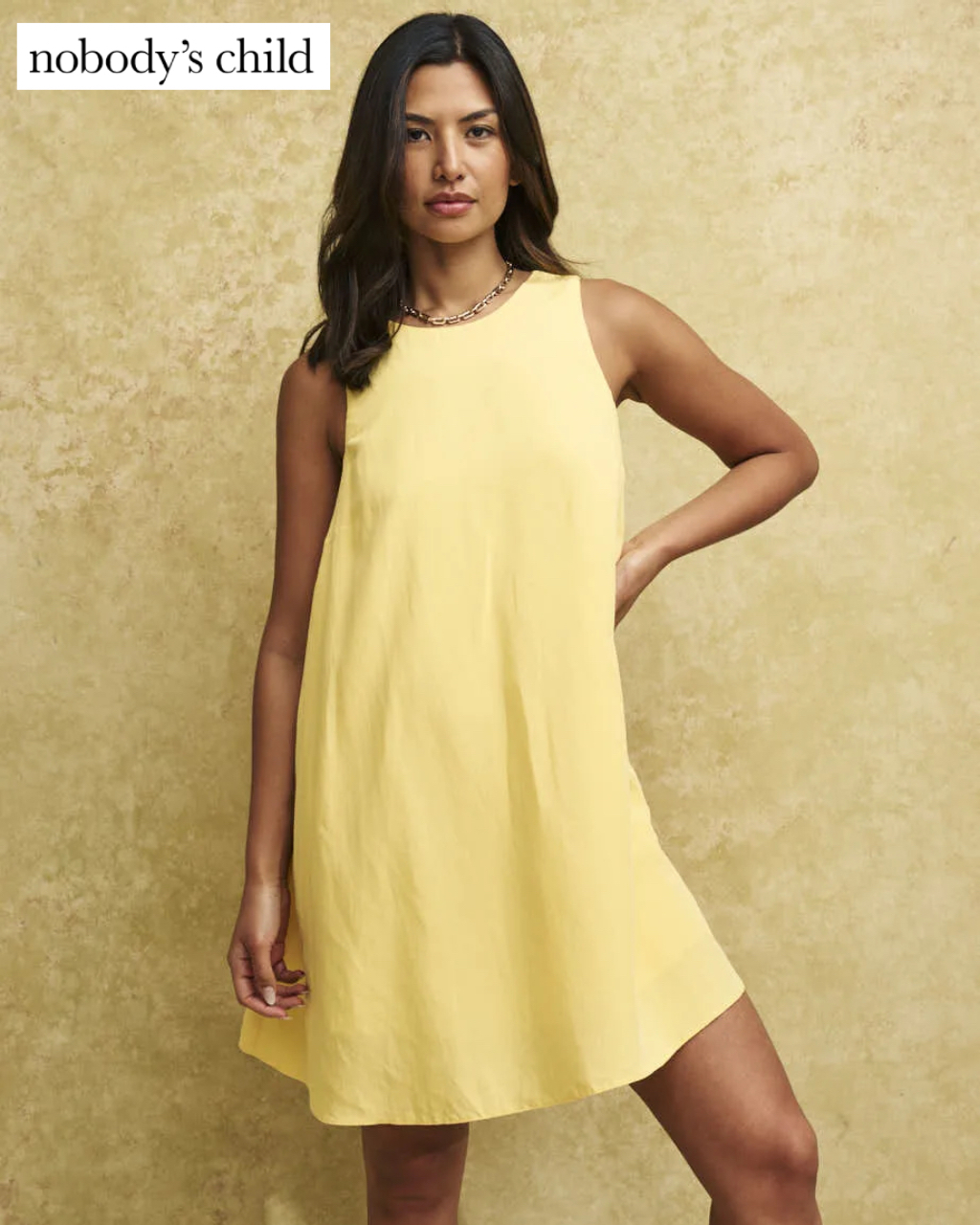
Firstly, there are many vintage shops that have pieces from the 1960’s that you can buy. You just need to have patience when going through everything. Some personal favourites are Beyond Retro, Rokit and Atika.
You can find many brands nowadays that specialise in making retro style clothing. Here’s some I’ve picked up on my travels: Unique Vintage, Atom Retro, The Modfather, Joanie, Modcloth, Soul and Style
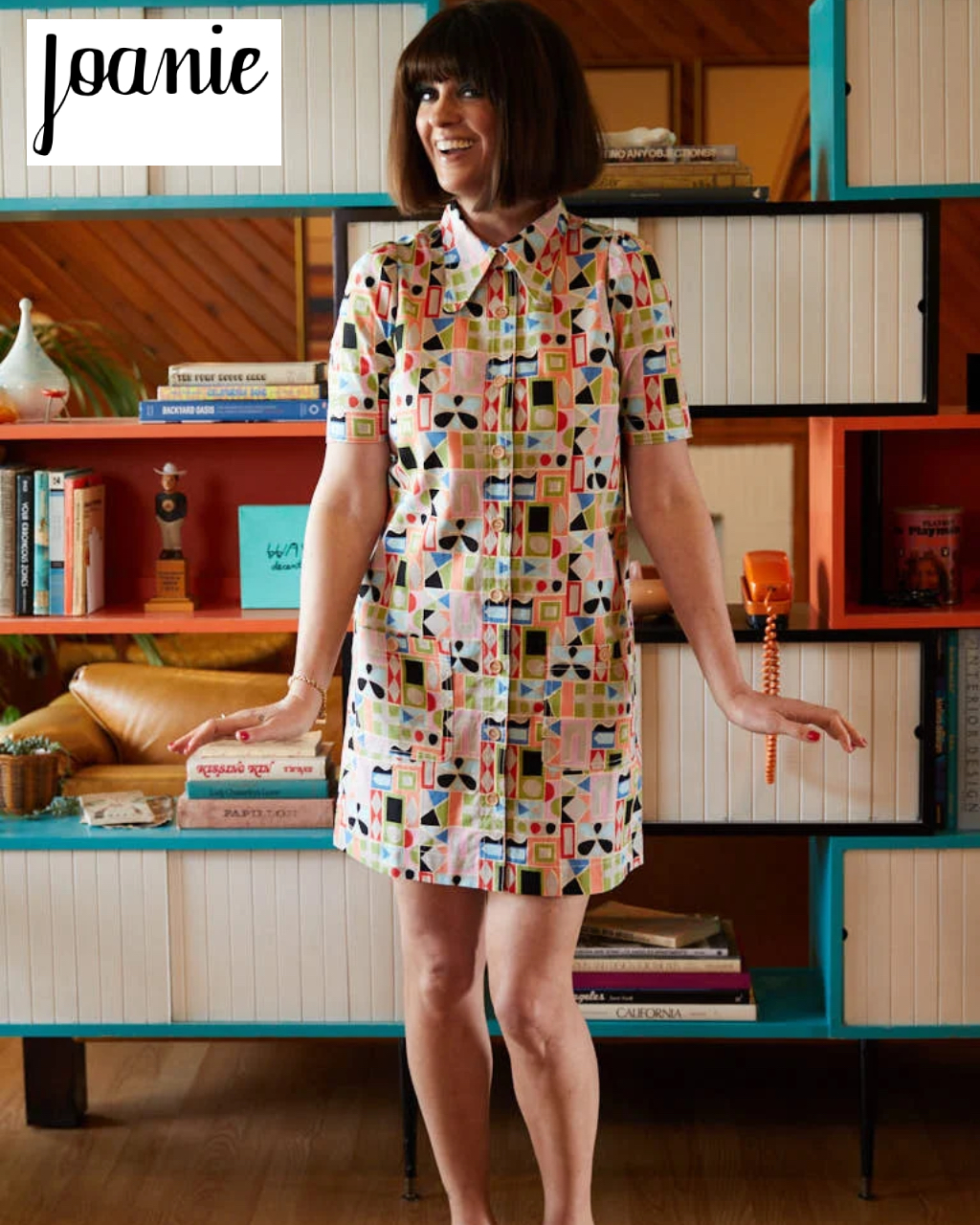
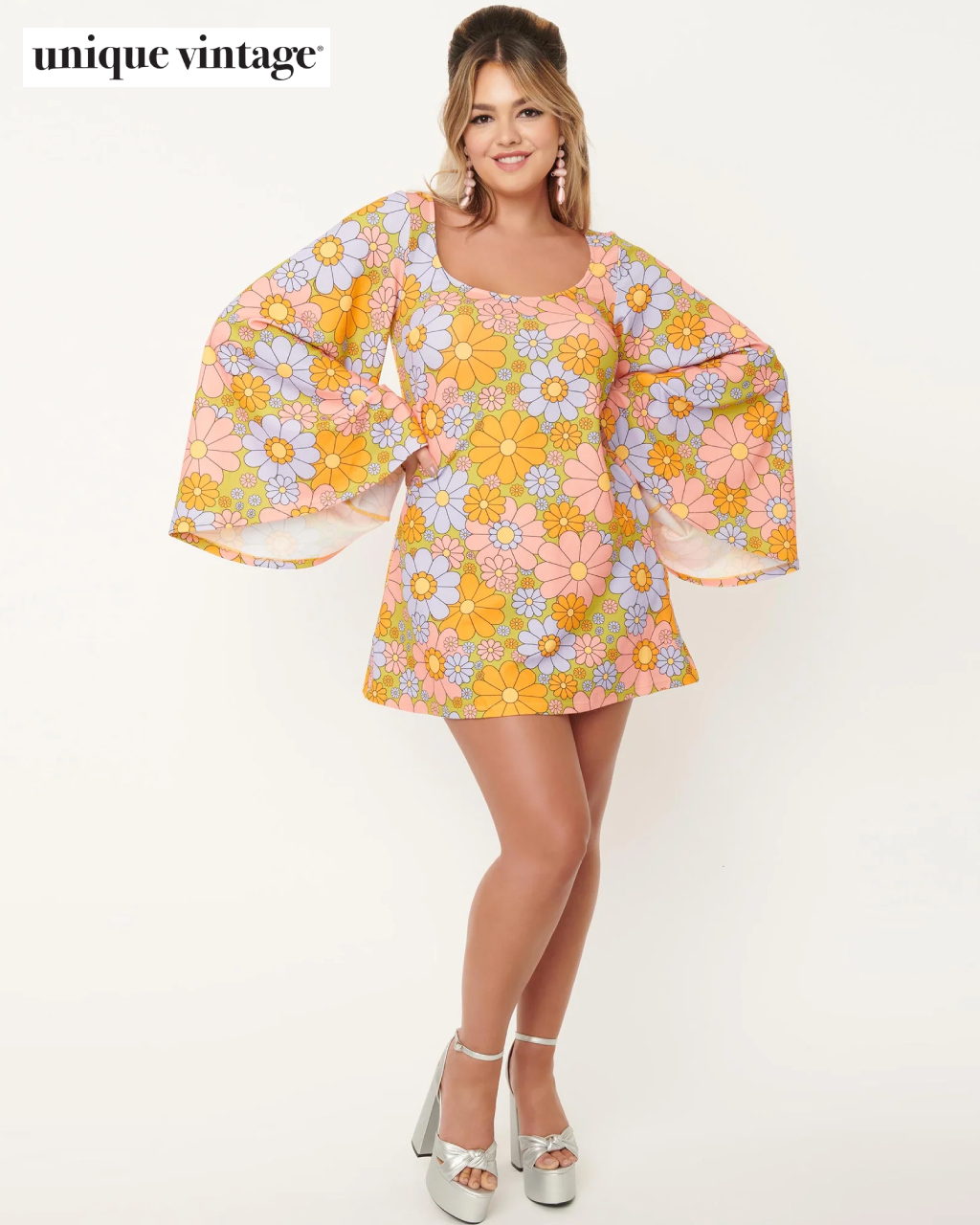
For what to look out for in your own wardrobe or the shops I’d say firstly colour-wise you’re either looking at monochrome, bright poppy colours or natural tones if you’re on more of the hippy side.
Shape wise, you’re looking at unstructured mini dresses and skirts, neat form fitting tailoring that preferably matches.
Think bold and fun, groovy and arty and accessorise with big bold graphic jewellery, fun hats, colourful tights and socks, a neck scarf, matching tie, gloves and the works really.
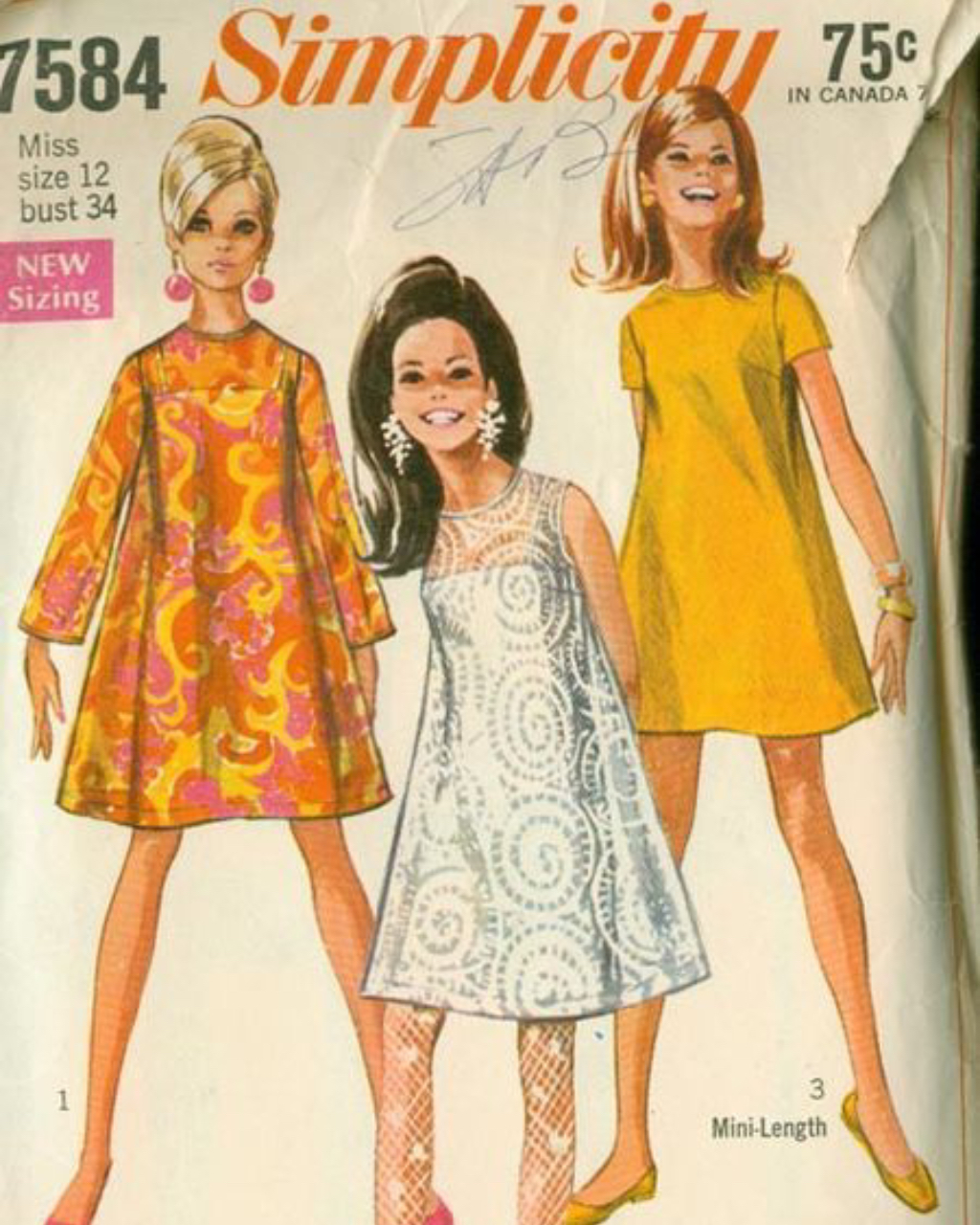
As with many past eras, patterns are available from the past if you’d like to have a go at making something or giving it to someone else to make for you. And the shift dresses are very simple and a great item to start with as your first piece if you’re new to sewing.
I hope this has started to paint a picture of this era in fashion for you. I’m always here to chat and help you find ways of making 1960’s fashion work for your skin-tone, body type and personality 🙂
